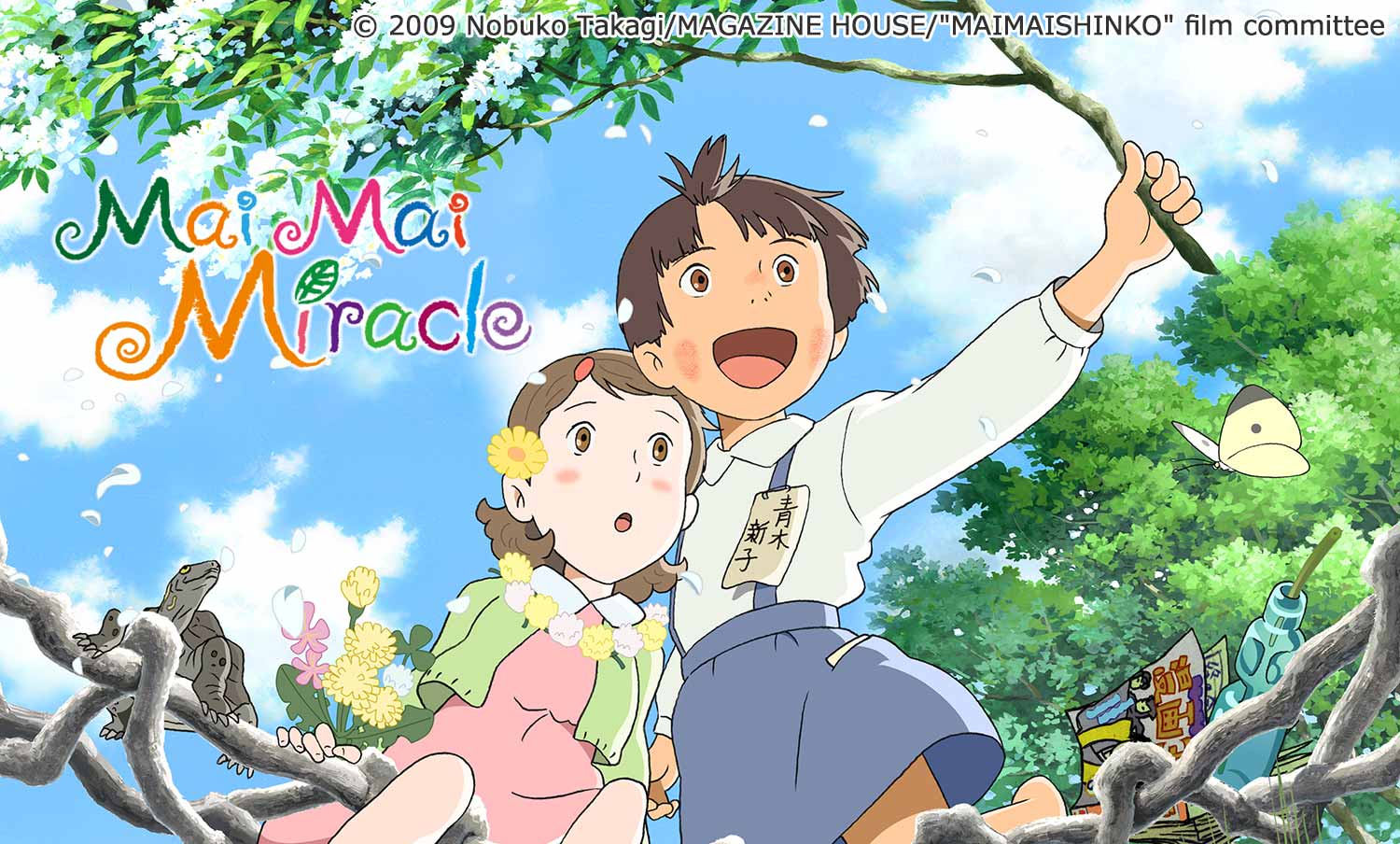 The Hakken i Town Yamaguchi provides the guide for travelling to locations that were used as models for scenes in anime, drama, or films.
The Hakken i Town Yamaguchi provides the guide for travelling to locations that were used as models for scenes in anime, drama, or films.
This time,the Hakken i Town editors traveled to 17 locations in Hofu City in Yamaguchi Prefecture that can be seen in the anime film “Mai Mai Miracle!”
“Mai Mai Miracle” (2009)
Directed by Sunao Katabuchi, director of the 2016 movie “In This Corner of the World”
An elaborately crafted and heavily researched work set in Yamaguchi Prefecture’s Hofu City in the 1950s, that deftly captures scenery that all can find nostalgic and the sort of bittersweet memories that never fade, bringing it to life through animation.
Here we will introduce the scenes from the anime, set in the 1950s, and the present locations today over 60 years later, along with some.
We also show the google maps of the taking-pictures spots of 17 locations. Smart phones navigate you to the places.
1.Mitajiri Station (Now Hofu Station)


↑ A scene where Kiiko and her father get off at Mitajiri Station (now Hofu Station).
To the left you can see what we can assume is Sanyoro when it was still under construction.
↑ The intersection in front of what is now Hofu Station (Tenjinguchi)
More than 60 years have passed between the 30th year of the Showa Period
(1955) and now in the 30th year of the Heisei Period (2018), but traces ofthat time can still be seen.
If we think of the former Sanyoro building as being where the cram school is today, we can see that if we face Prefectural Route 184 then they would have been waiting for the car near the crosswalk slightly to the right from the center of the picture.
*Sanyoro is now one building further back to the left than it was at that time.
(EDITOR) On location we thought “Oh! This must be it!” But taking a closer look it seems like it was further back…
2.Tenjin Street (Tenjin 1st Street) & Ginza Shopping District
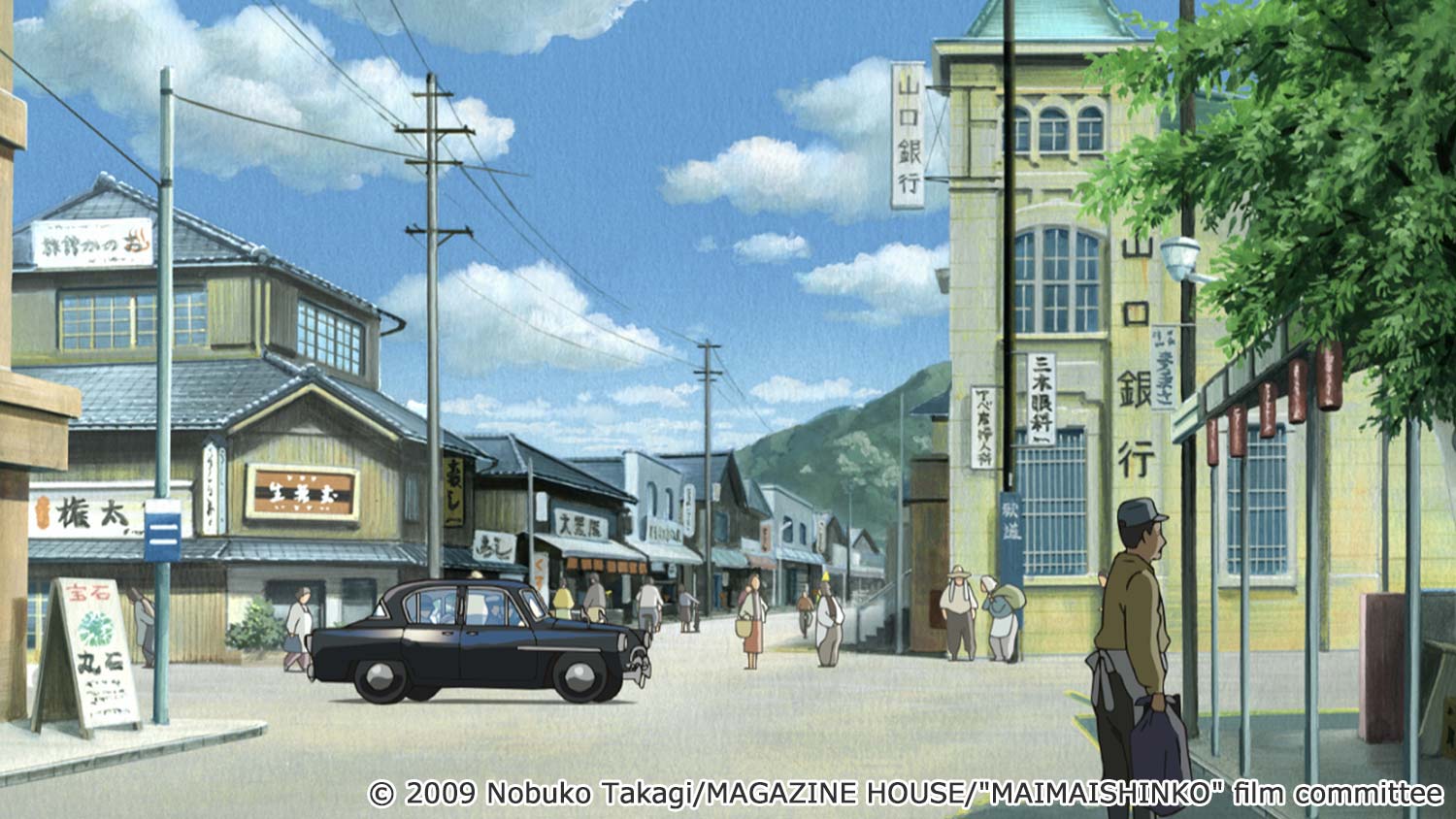
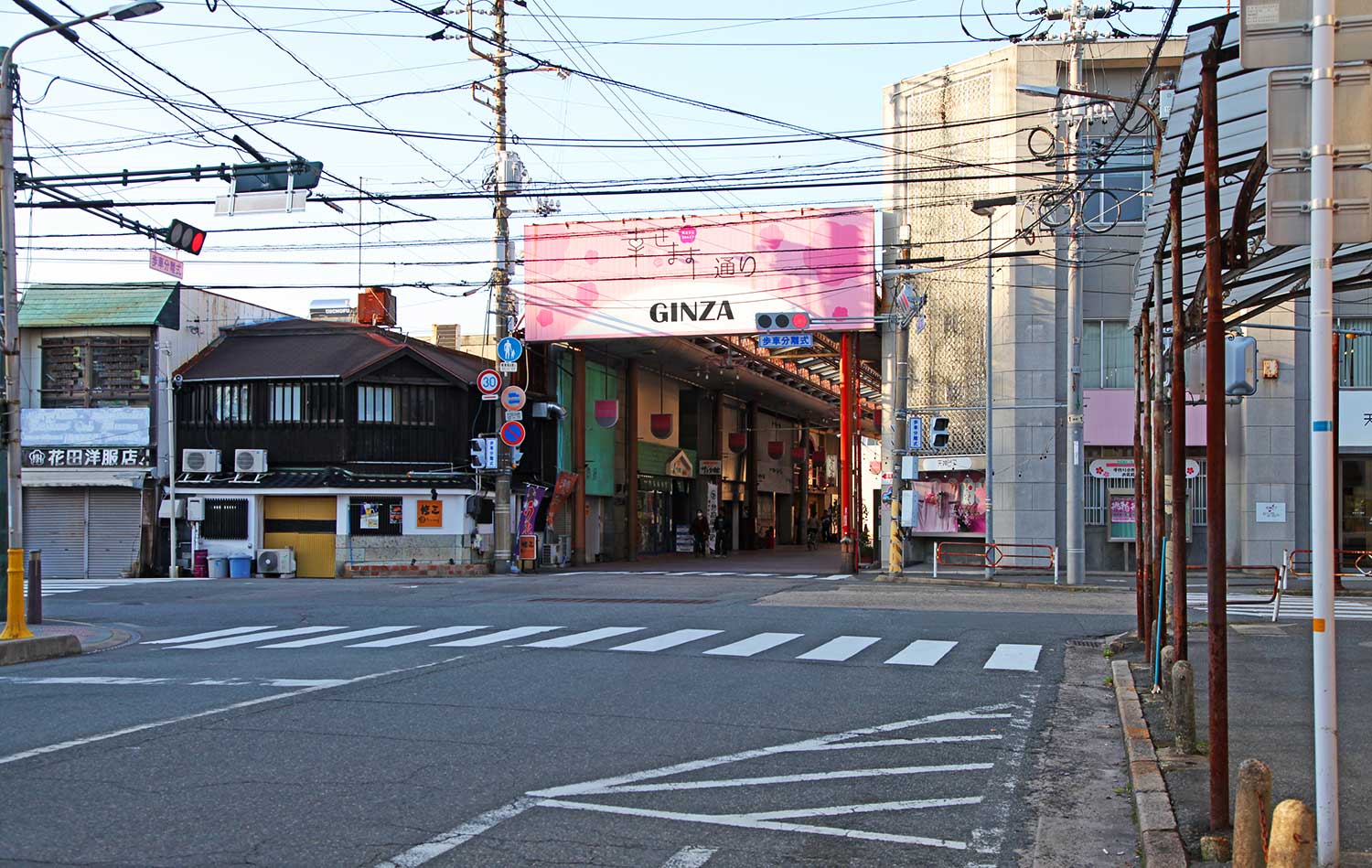 ↑ Tenjin Street and the entrance to Ginza Shopping District
↑ Tenjin Street and the entrance to Ginza Shopping District
There is a tourism information office called “Tenjin PIA” where Yamaguchi Bank used to be.
The cute pink writing (Shiawasemasu) on the sign in front of the Ginza Shopping District stands for “Wonderful + That really helps + Thank you” all rolled into one!
We had thought it was just a polite way of writing, or a different way of saying “Increasing happiness” (shiawase ga masu) or something like that.
*It seems like they may have meant it to include the “increasing happiness” meaning as well.
3. Matsuzaki Elementary School
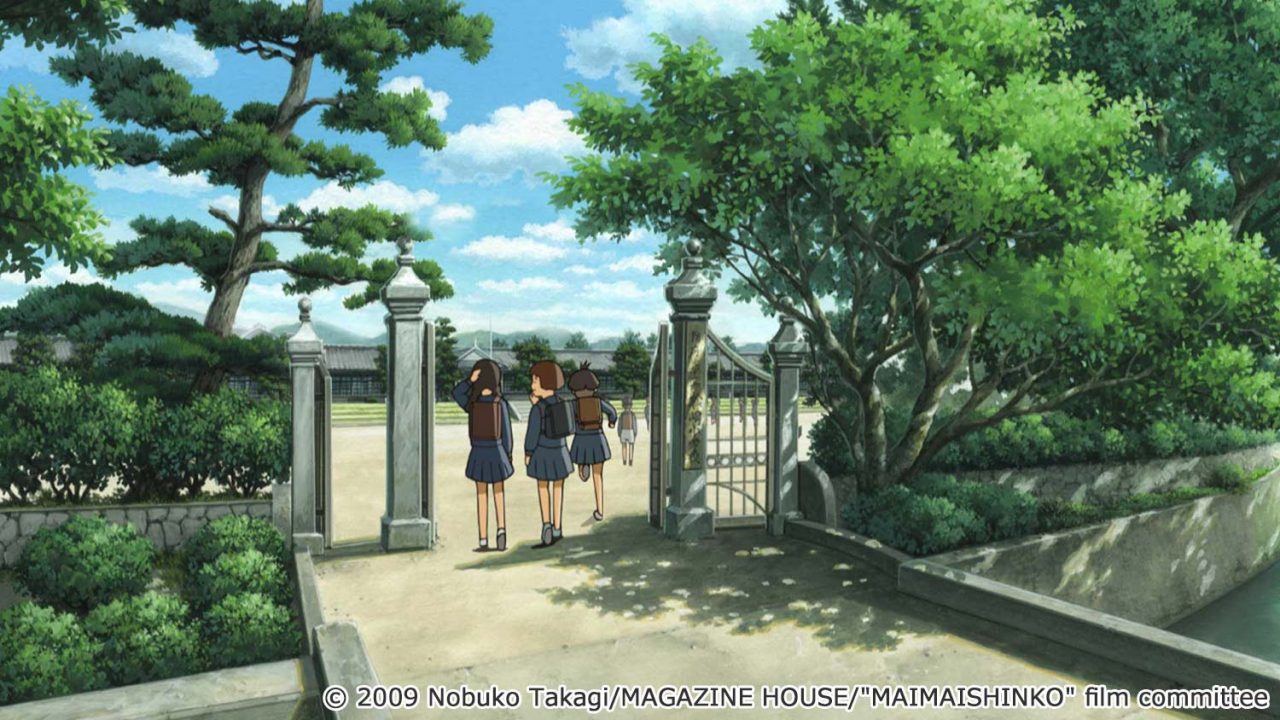
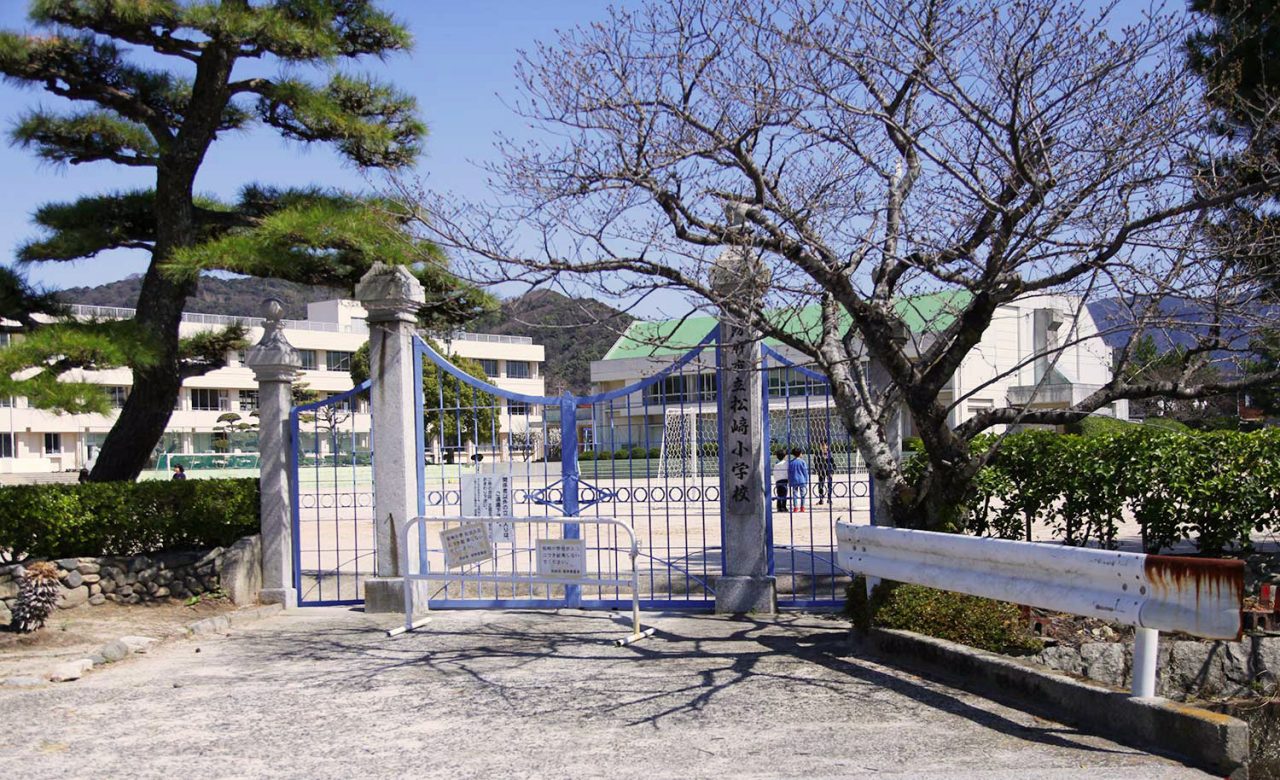
↑ Matsuzaki Elementary School, Front Gate
Nowadays there is a bridge for pedestrians and guardrails set up to the right of the gate.
What did all the Mai Mai Miracle loving adults on the editorial staff look like to the kids playing inside as they enthusiastically took these photos…? (Hahaha!)
Comparing the photos from the 50’s and now we can see how it has changed,
with the new gym in the back, the soccer field, and all the playground equipment.
*The school grounds are off-limits to non-school personnel.
*We received prior permission to take these photos from outside the school grounds.
4.Road to School (Sebatogawa River and school road(Minamimatsuzakicho))
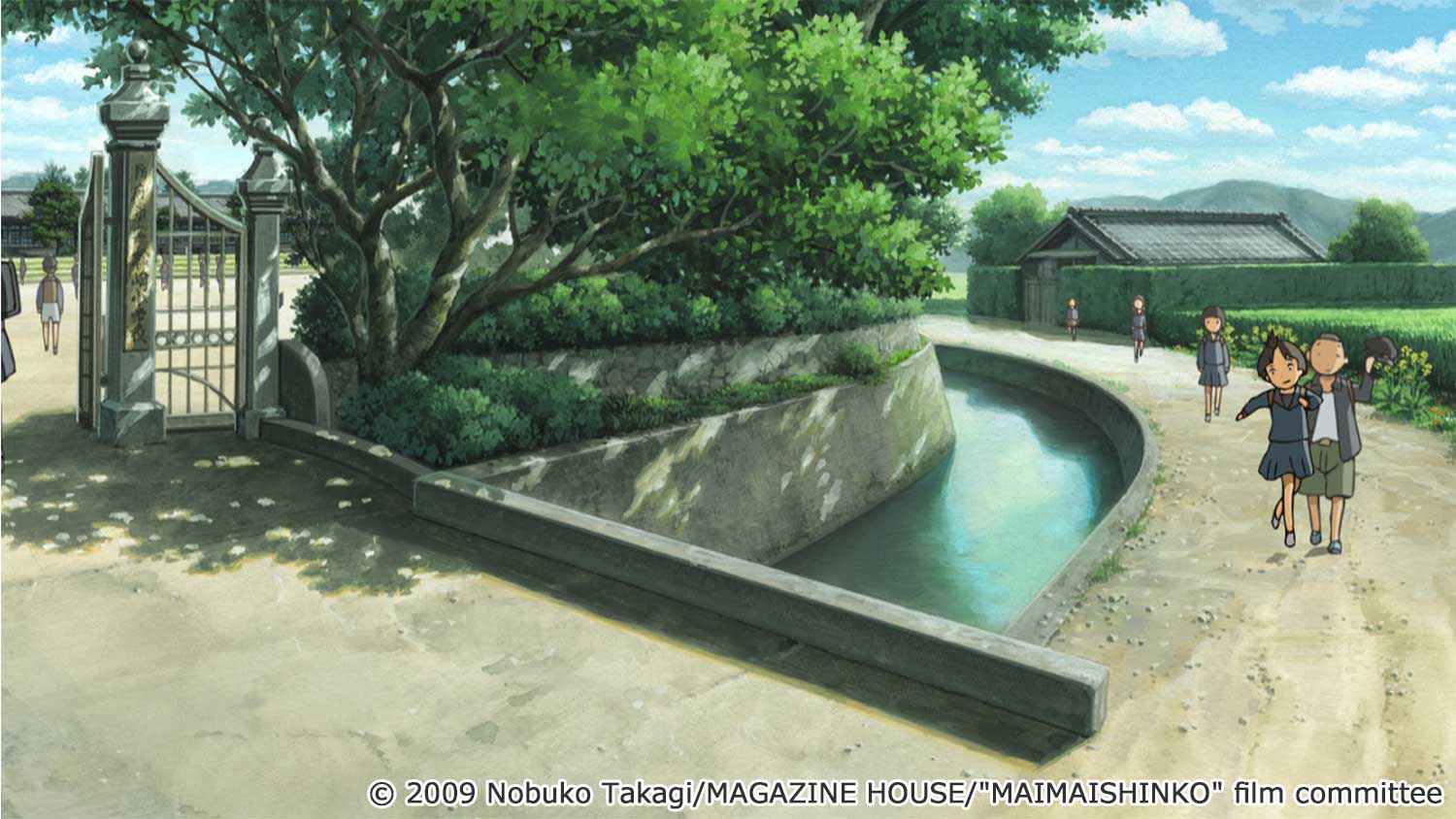
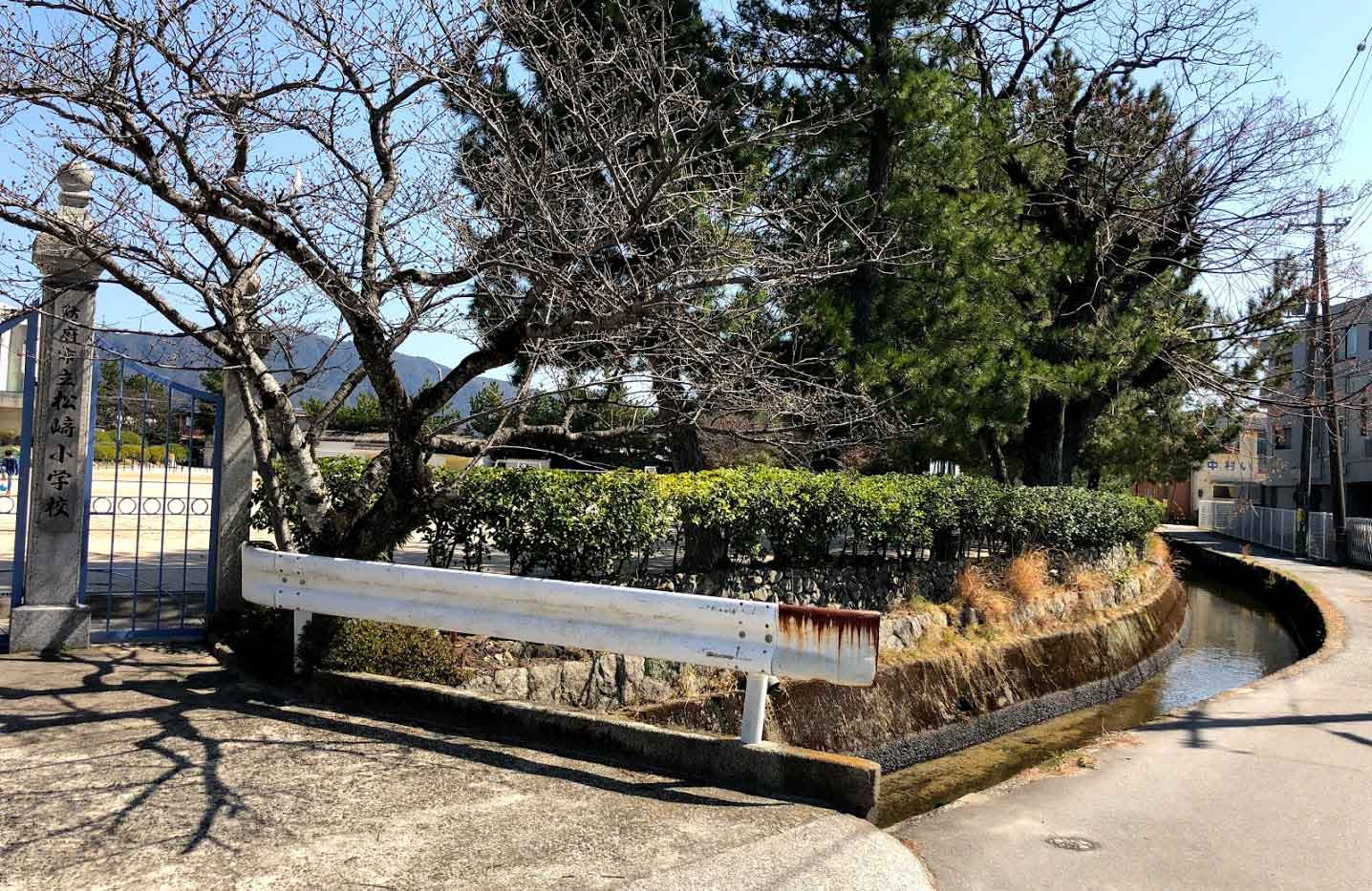 ↑School road
↑School road
This was the road that Shinko and the others took to school in the movie, too.
This shot does not have quite the height because the photographer was not quite tall enough, but look at this angle!
The river runs right along the road the whole way.
Along the way the Duck Coop shows up and the scene eventually continues on to show Kiiko trudgingly walking home from school.
*The school grounds are off-limits to non-school personnel.
*We received prior permission to take these photos from outside the school grounds.
5.Duck Coop

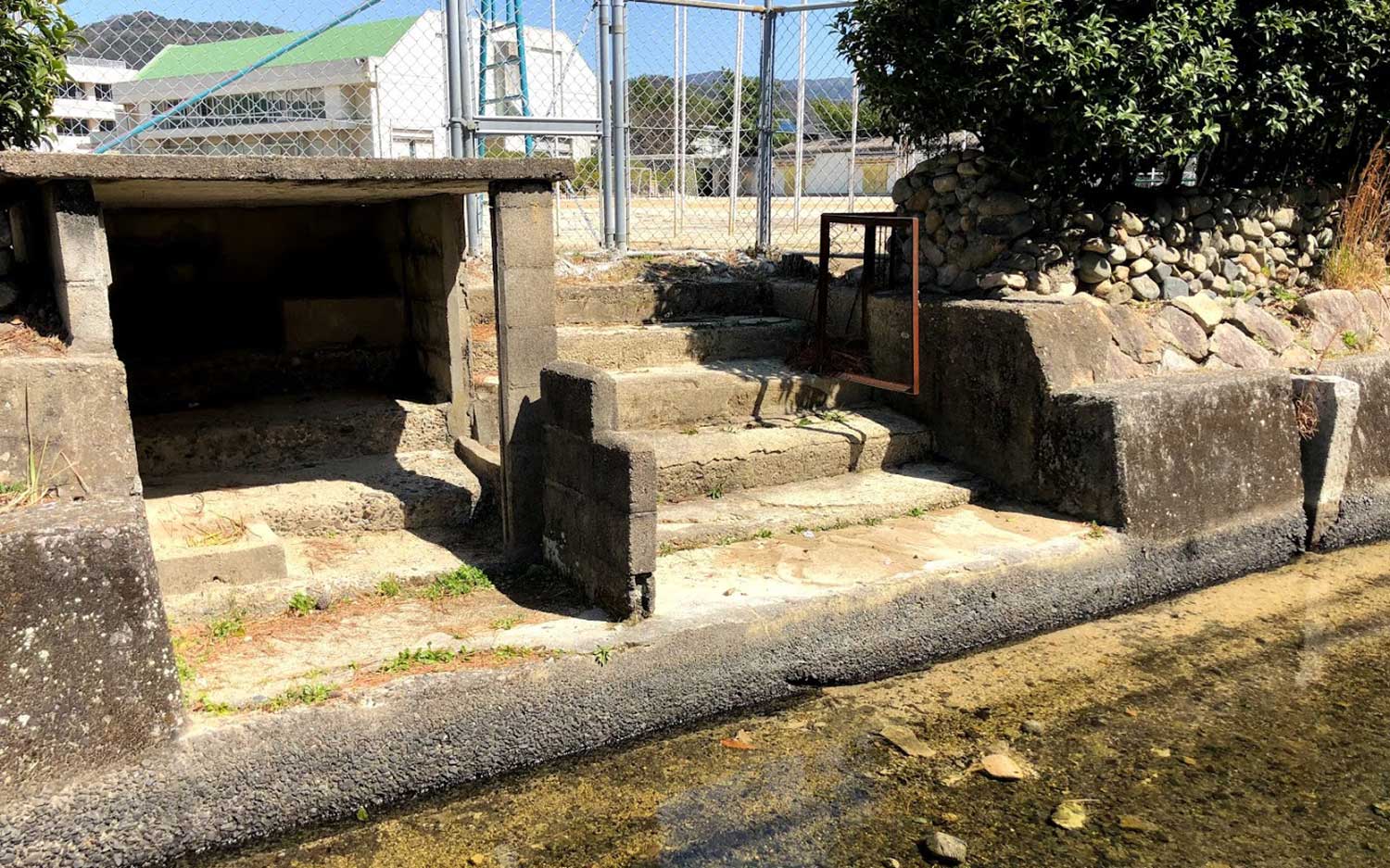 ↑ Duck coop
↑ Duck coop
Follow the Sebatogawa River that runs along the right side of the school gate and you will spot this.
This appears in the scene where Shinko and Kojiro are competing.
If you take a look at the still you can see a few ducks on the left side.
The coop does not even have any doors on it, so maybe they just let them roam free back then?
They do not seem to use it anymore these days.
*The school grounds are off-limits to non-school personnel.
*We received prior permission to take these photos from outside the school grounds.
4-2.Road to School (Sebatogawa River and school road(Minamimatsuzakicho))
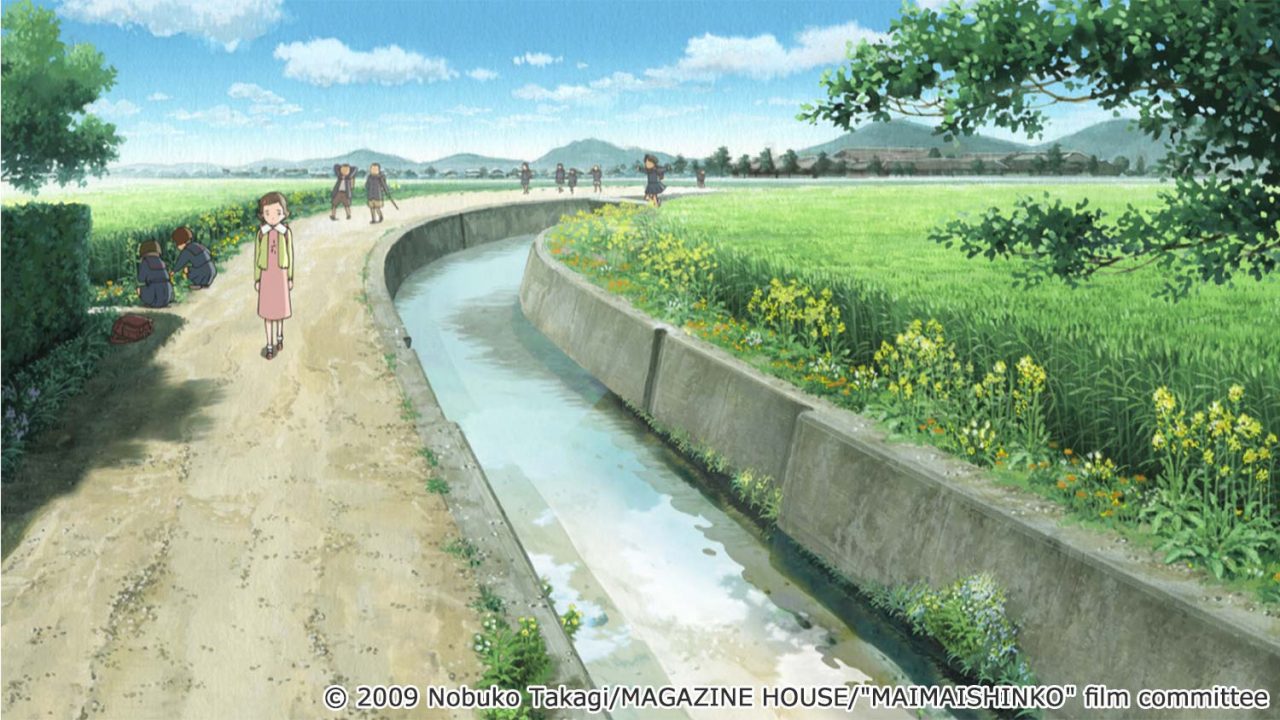
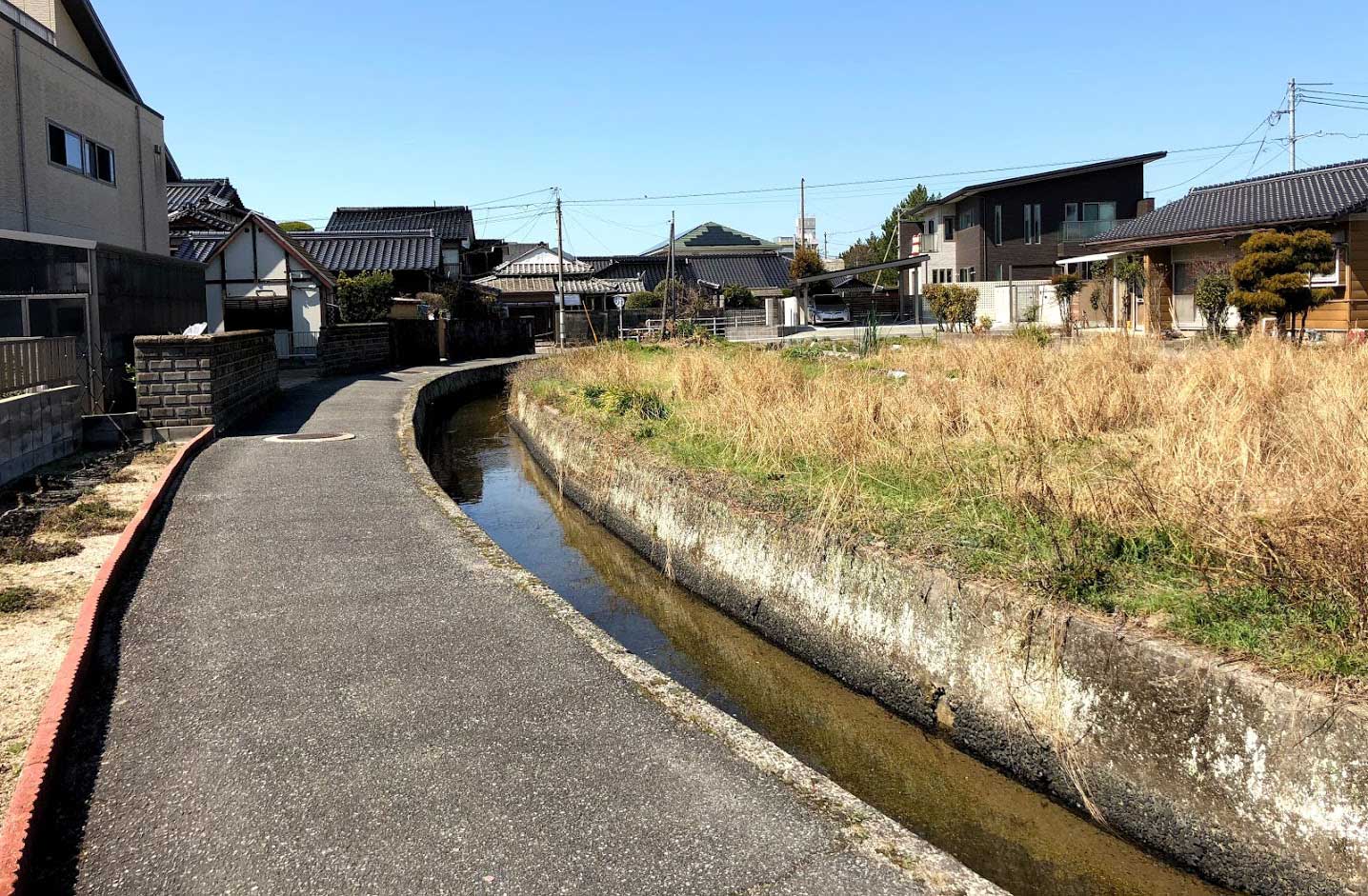 ↑ Sebatogawa River
↑ Sebatogawa River
The river just goes on and on!
So, there is a long way from the Duck Coop onward…
“Wheres the scene with Kiiko heading home?!”
“We’re still not there? How long does this river run on for?!”
But as we keep moving on we come upon it.
You will get to it just when you are about ready to give up.
Walk away from the school, turning back every now and then to see, and you will find it.
Kiiko probably would have been somewhere around the brick portion sticking out on the left side of the picture.
6.Flood Gate Path (Canal & Flood Gate)

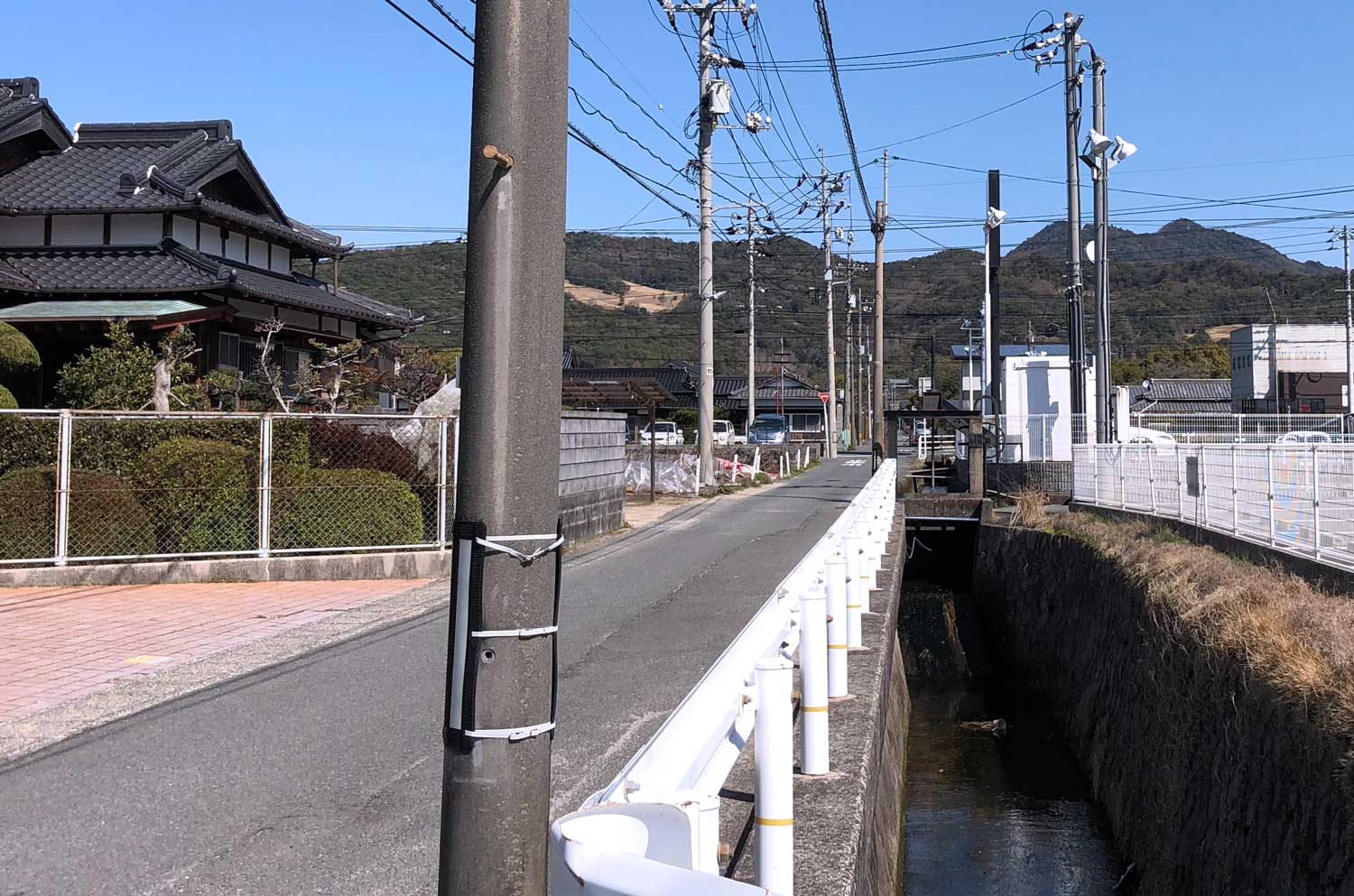 ↑ Flood gate path (This path has existed for more than one thousand years.)
↑ Flood gate path (This path has existed for more than one thousand years.)
Face away from the Kokuga Bus Stop and cross over towards UNIQLO and you will see the canal and the flood gate!
The electric poles get in the way now, but this is surely the angle that was used as a reference model.
Maybe it was just because of the good weather on this day, or maybe it is more of a seasonal thing?
But on this day, we did not get to see the water rushing out from the gates like we do in the movie.
Across from the flood gate you probably could have seen the smoke shop…
*The shop has since been torn down.
7.Kanebo-cho Intersection (The train crossing on Kiiko’s way home)
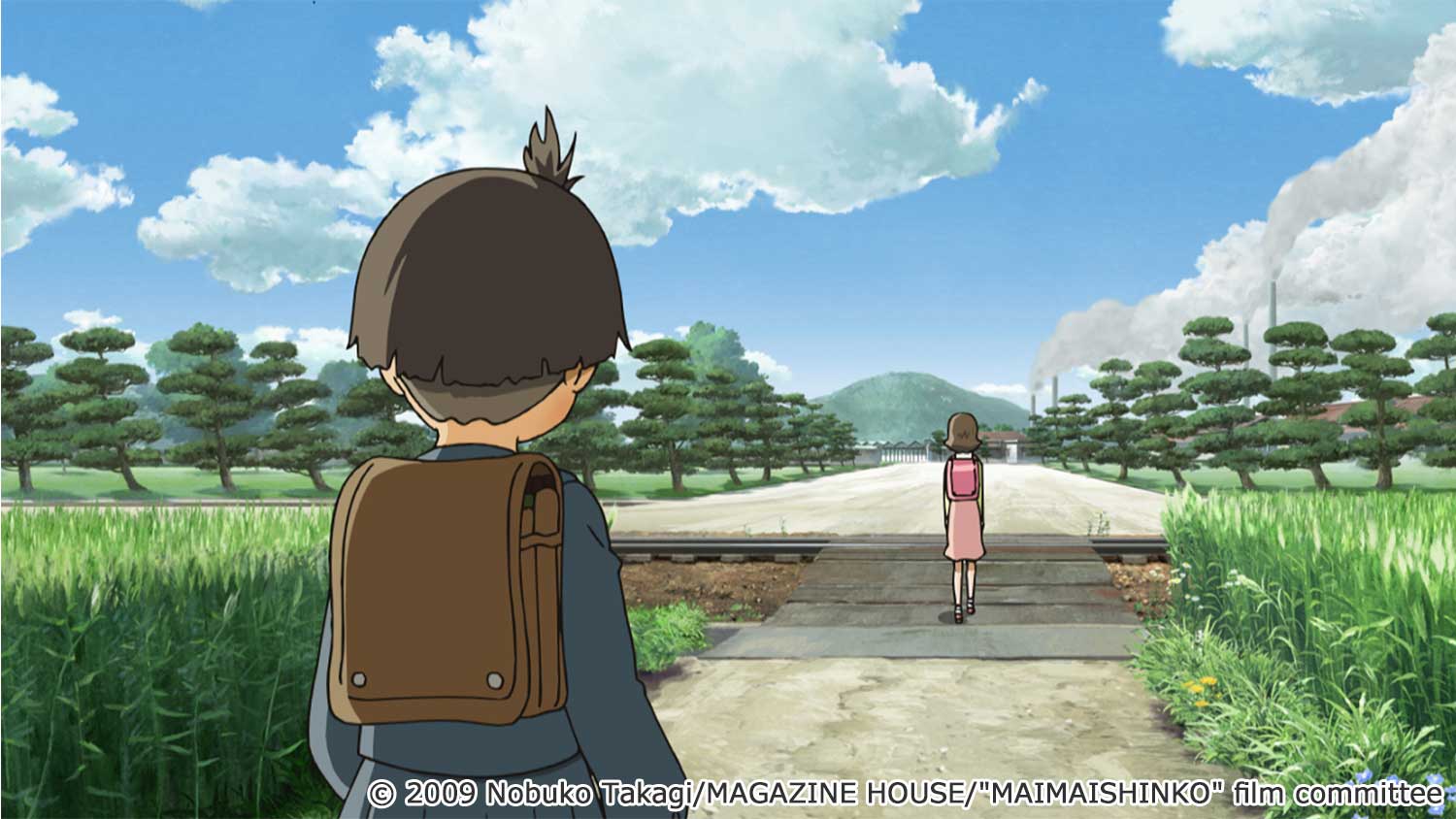
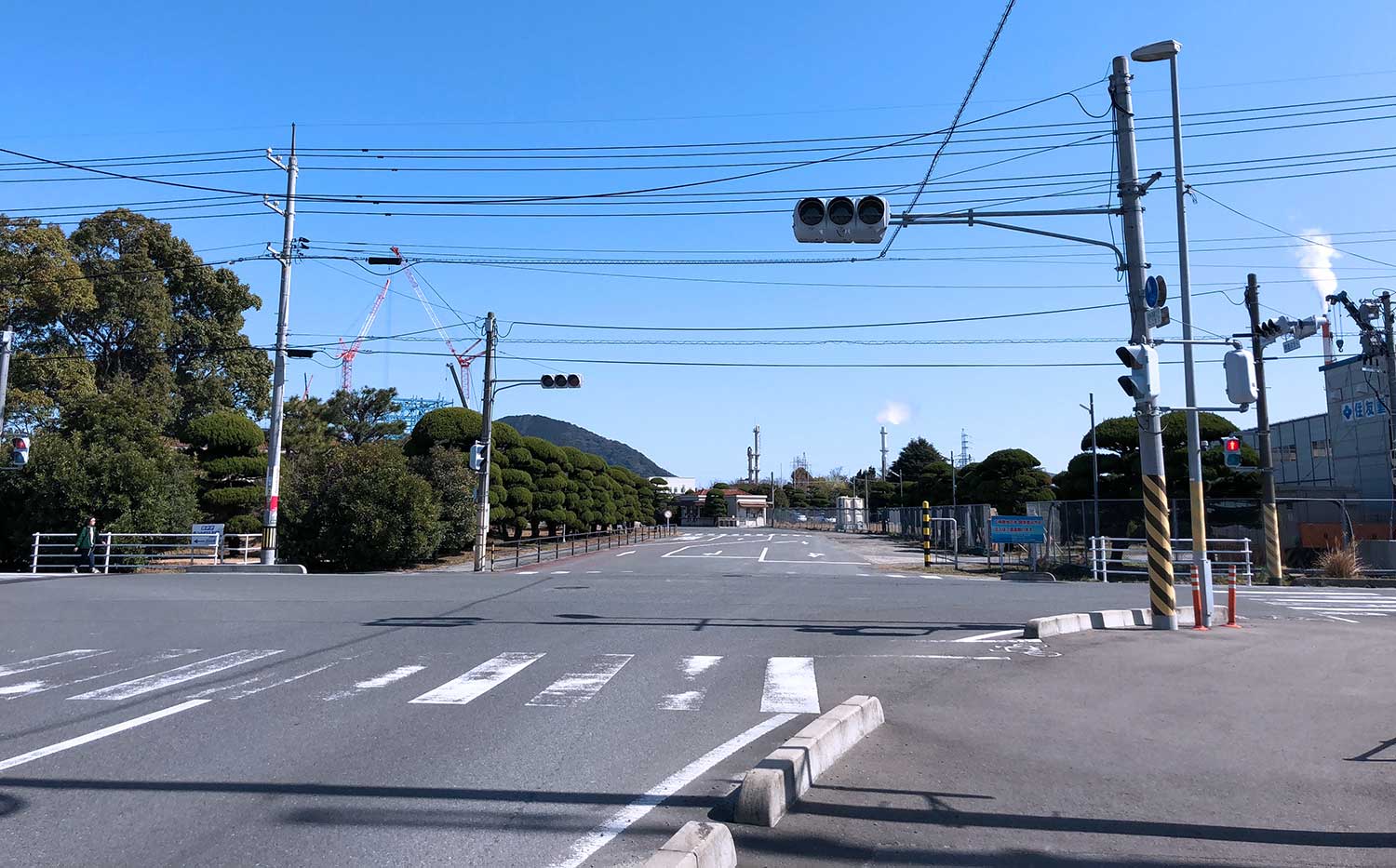 ↑ Kanebo-cho intersection
↑ Kanebo-cho intersection
The spot where Kiiko stood is a road now.
This photo was snapped as soon as there were no cars in view, so it looks a bit deserted, but normally there are cars coming and going, so be mindful when taking pictures!
From here on the way is open only to authorized personnel, so for us this is unfortunately as far as we can follow Kiiko’s way home.
8. Reference model for the hammock tree

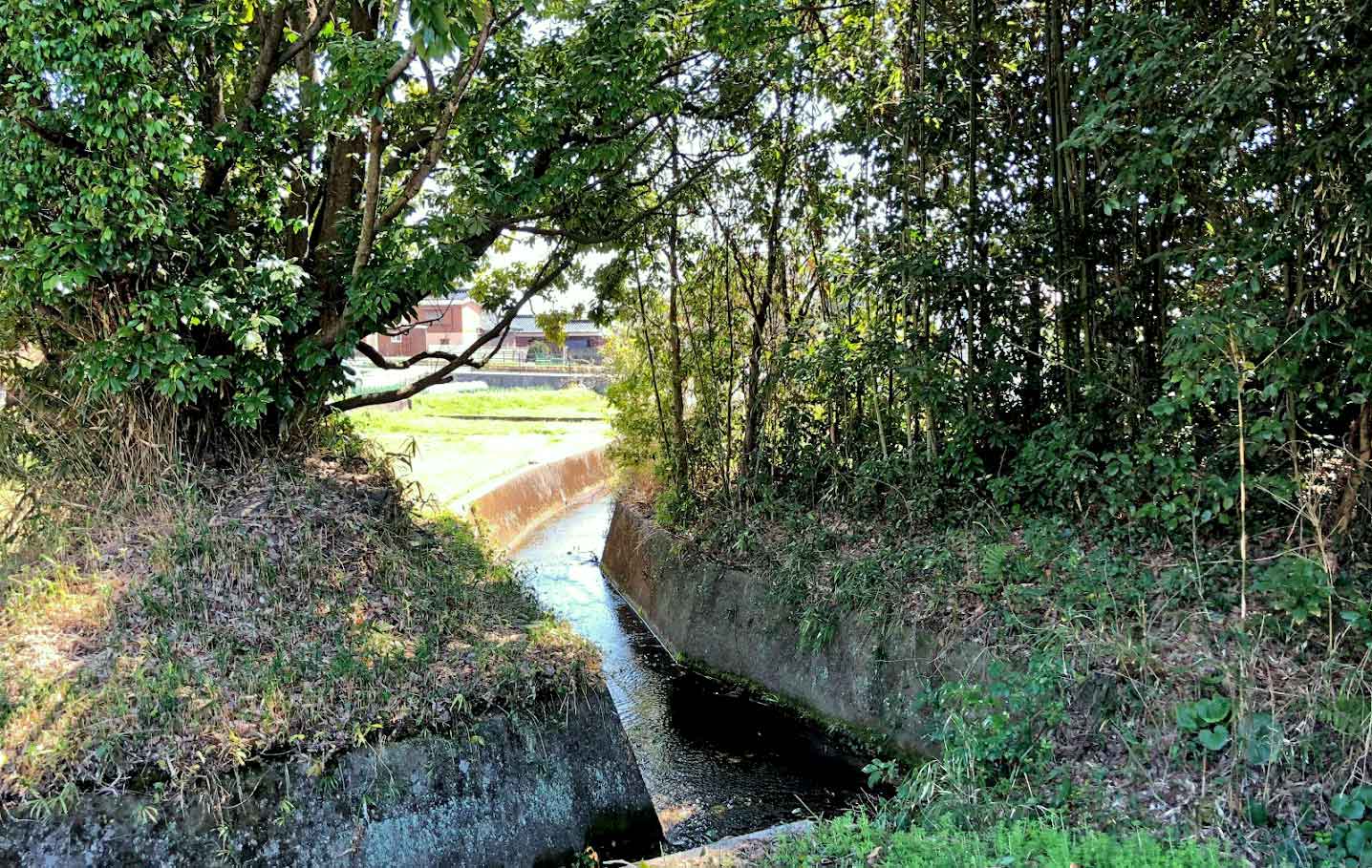 ↑ Reference model for the hammock tree
↑ Reference model for the hammock tree
If you look away from Saba Shrine and at the field down beyond the guardrail you will see a spot to the right that was used as a model for the hammock tree. (just model for tree, not the place of the scene)
The river does not run quite as straight as it did in the movie,
but this was surely where the hammock was.
The two trees seem pretty slim, so for there to have been a hammock made of vines that could hold two kids…
It must have been really sturdily made.
9.View from Shinko’s House
(The mountains beyond the wheatfields / Tatara Mountain & Yahazugadake Mountain beyond Katsuma Shrine)
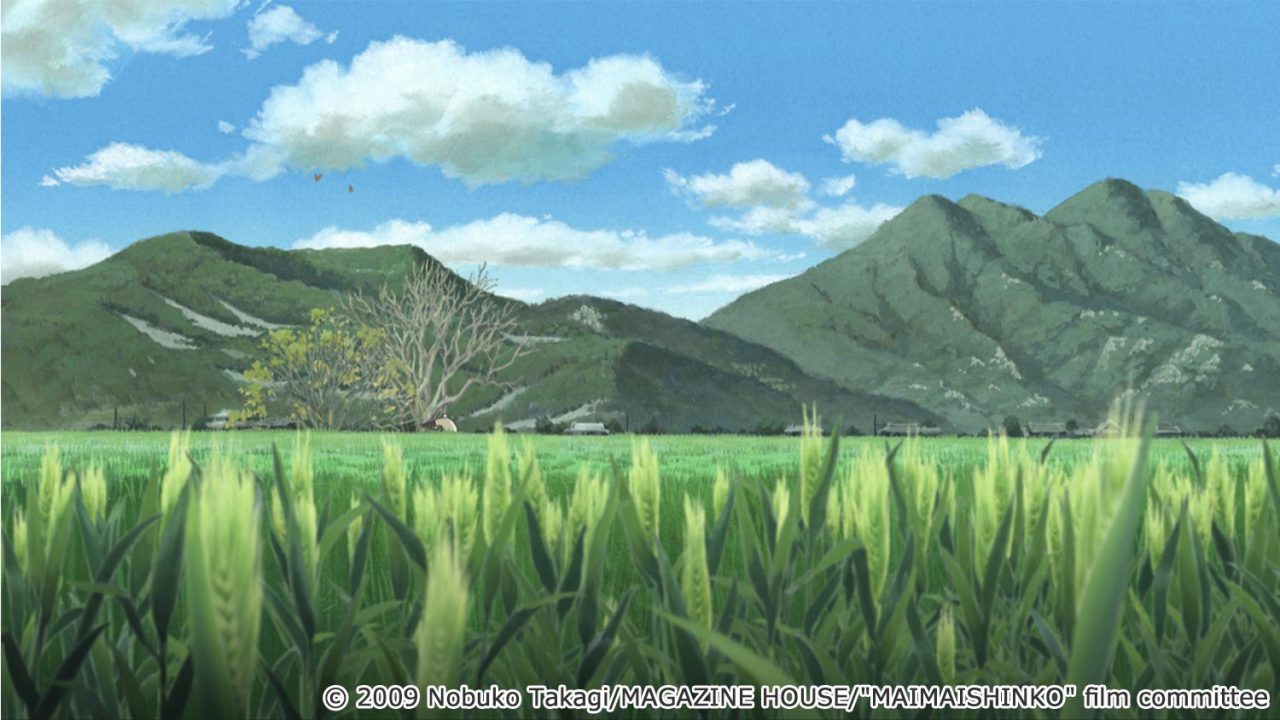
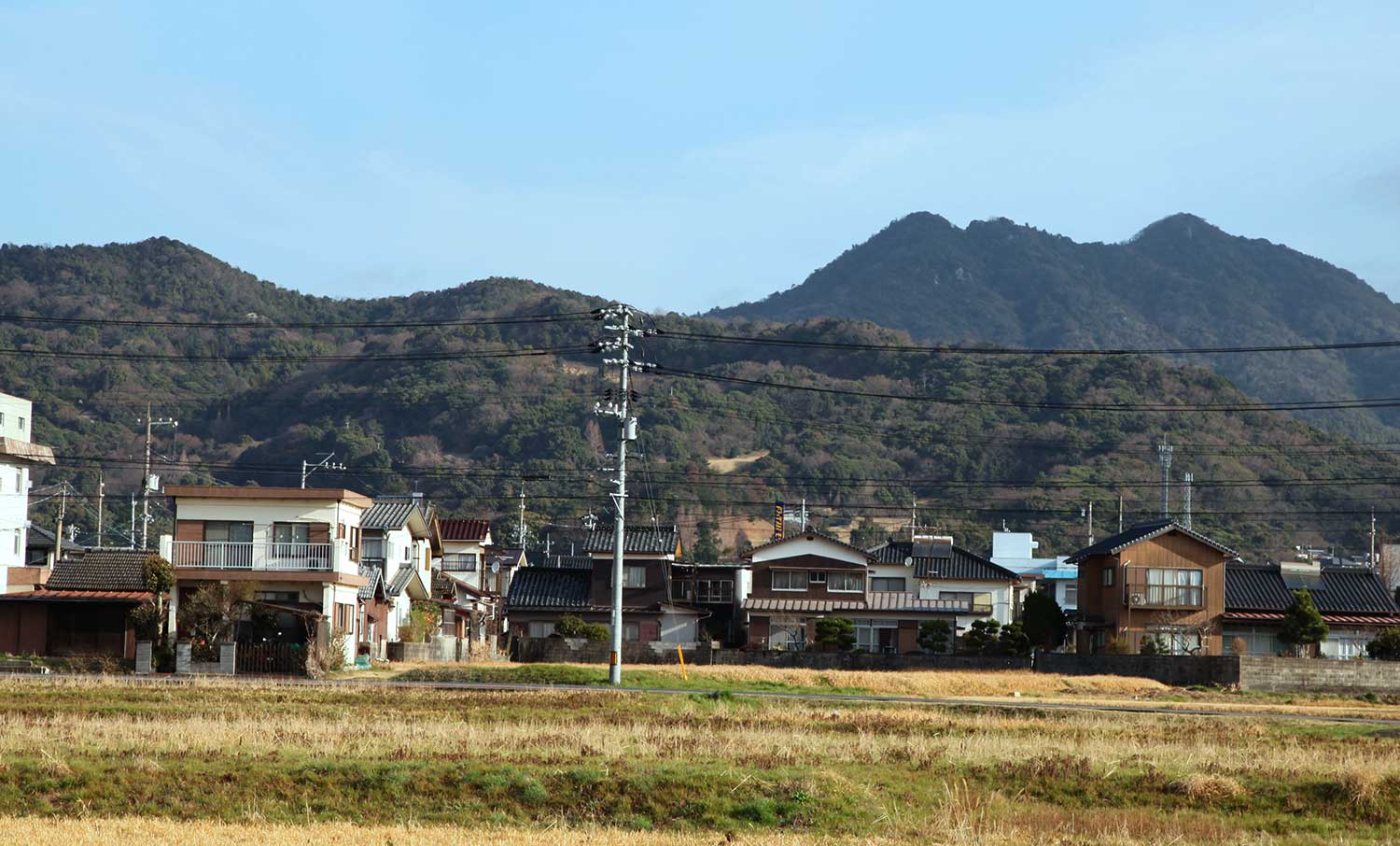 ↑ The view from Shinko’s house
↑ The view from Shinko’s house
The top half of the scene looking up from the wheat fields to the Tatara & Yahazugadake mountains was surely based off this spot.
The view can be seen opposite the guardrail at Katsuma Shrine remains.
“Which mountain is that? What’s it called?”
We puzzled over the view, comparing it to a printout of the scene from the movie, not really sure which was exactly right, but ending up with this picture.
The bottom half of the scene was based on the wheat fields at Kokuga and from another area. (Director’s blog)
10.Kokuga Bus Stop
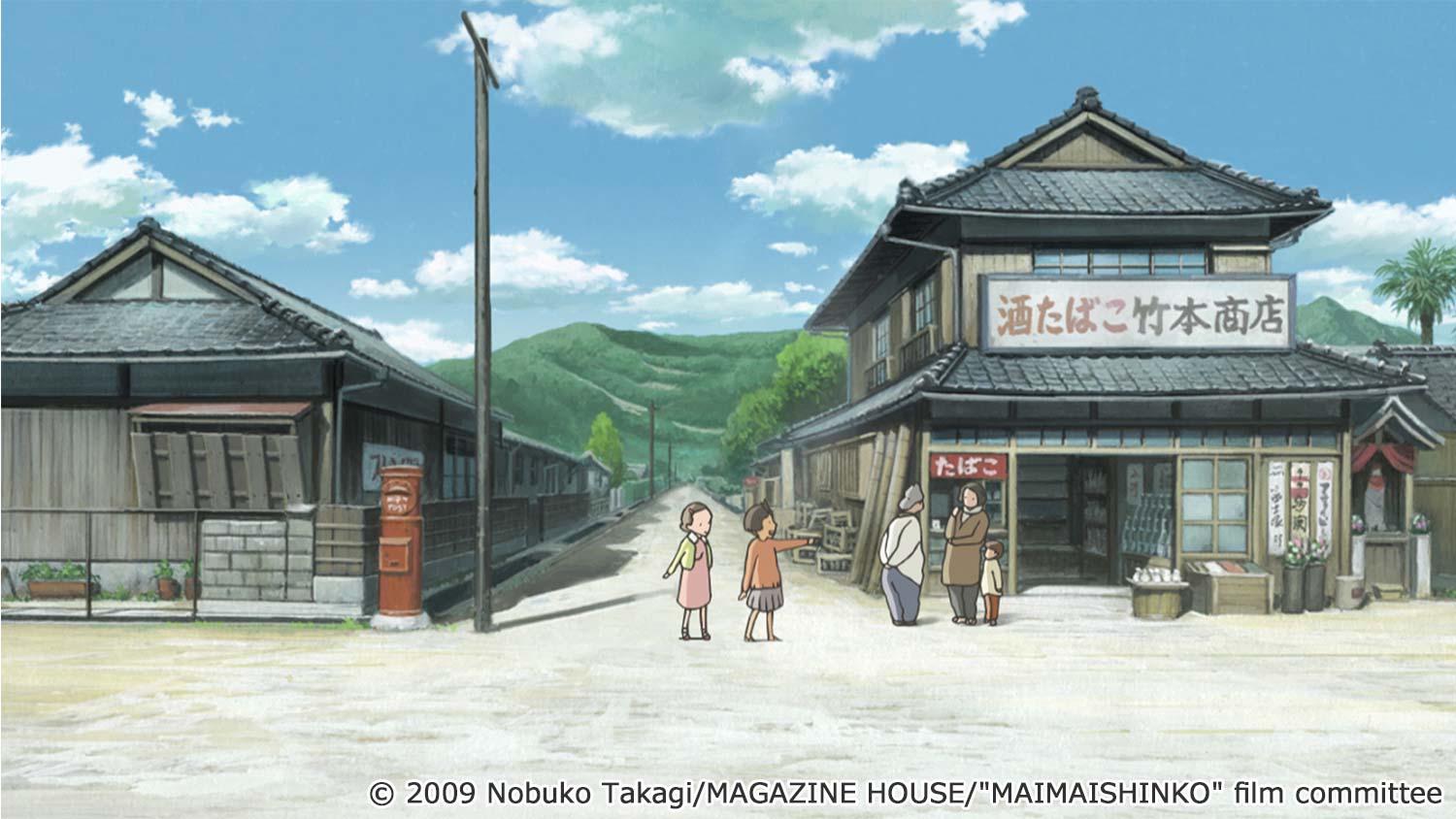
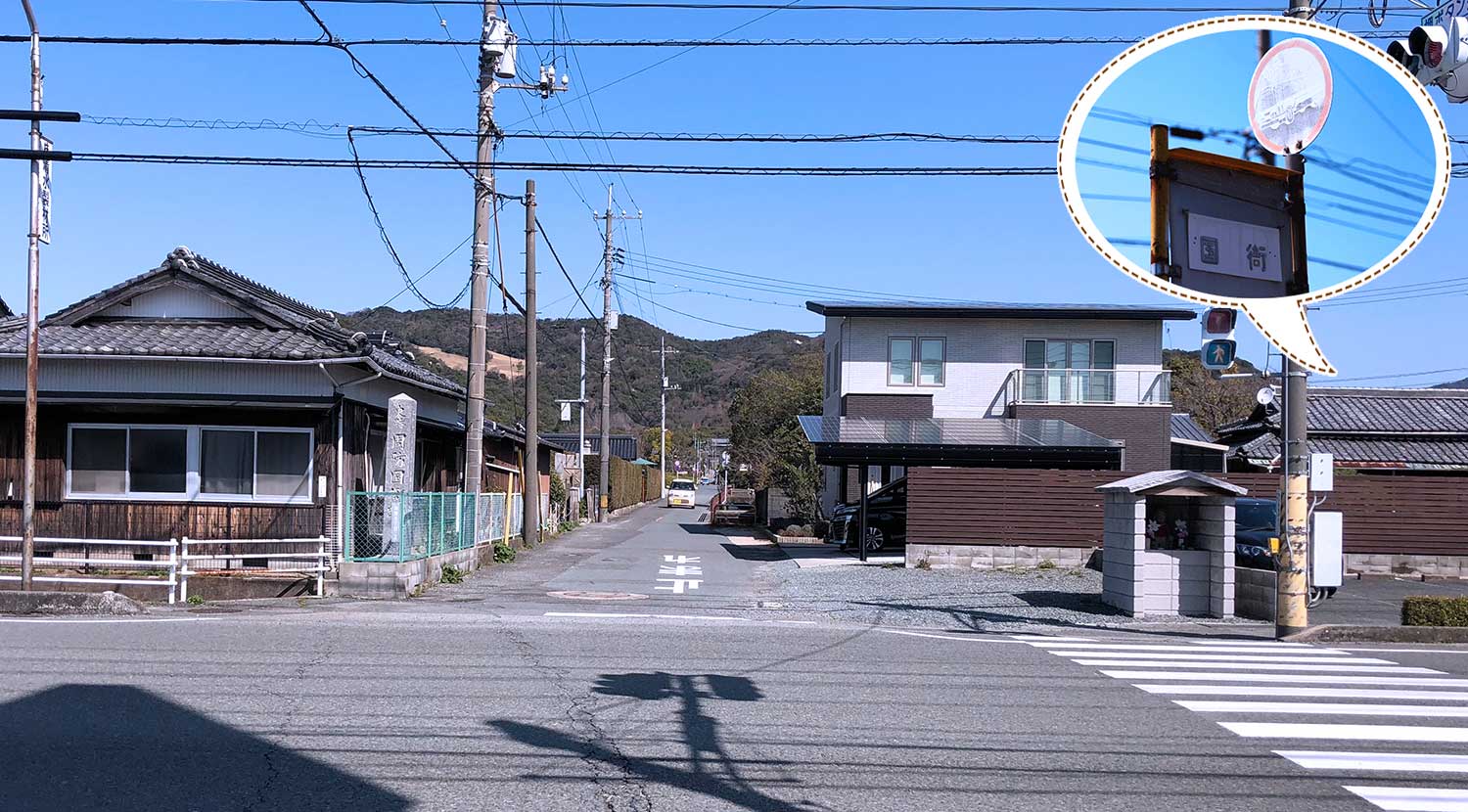 ↑Kokuga Bus Stop
↑Kokuga Bus Stop
This is another easy to spot location.
Back to your right you will find the Hofu branch of UNIQLO.
The unfortunate thing about this location though, is that Takemoto Shoten
(actually named Arii Shoten) has been torn down.
Kokuga Bus Stop is across the street here and to the right.
This location might be labeled as the bus stop, but the main site is the smoke shop.
11.Smoke Shop Sign / Showa Museum
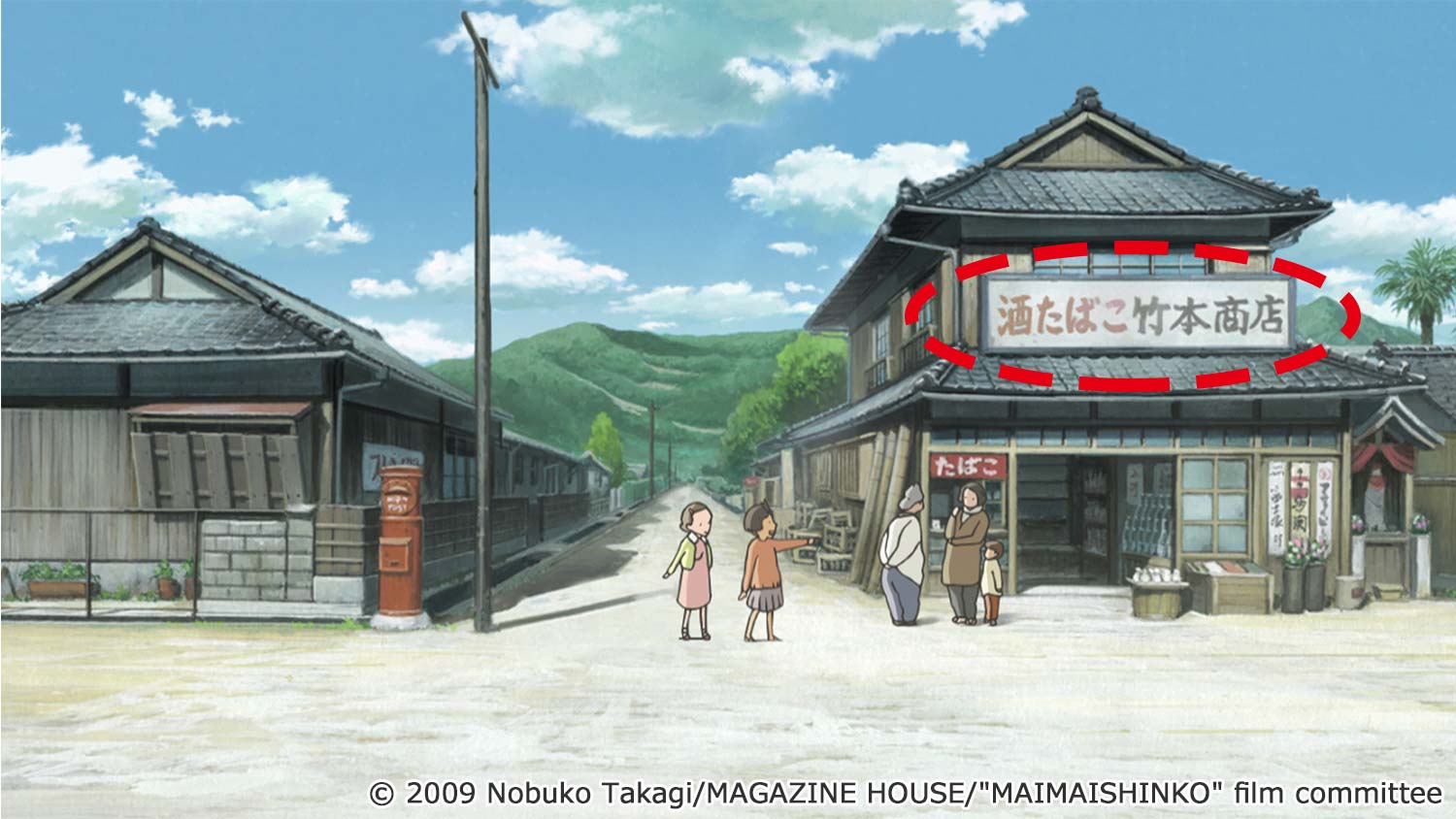
 ↑This is where the smoke shop sign is now.
↑This is where the smoke shop sign is now.
The sign from Takemoto Shoten (actually named Arii Shoten) is now here!
Who would have ever expected it to be just sitting out in the unmanned rest area
next to the Show Museum in the middle of the Ginza Shopping District?
So, this is where it has been hiding!
Imagine stopping at the sight of a Mai Mai Miracle poster and then finding this inside. It is hard to believe.
12.Kokuga Remains
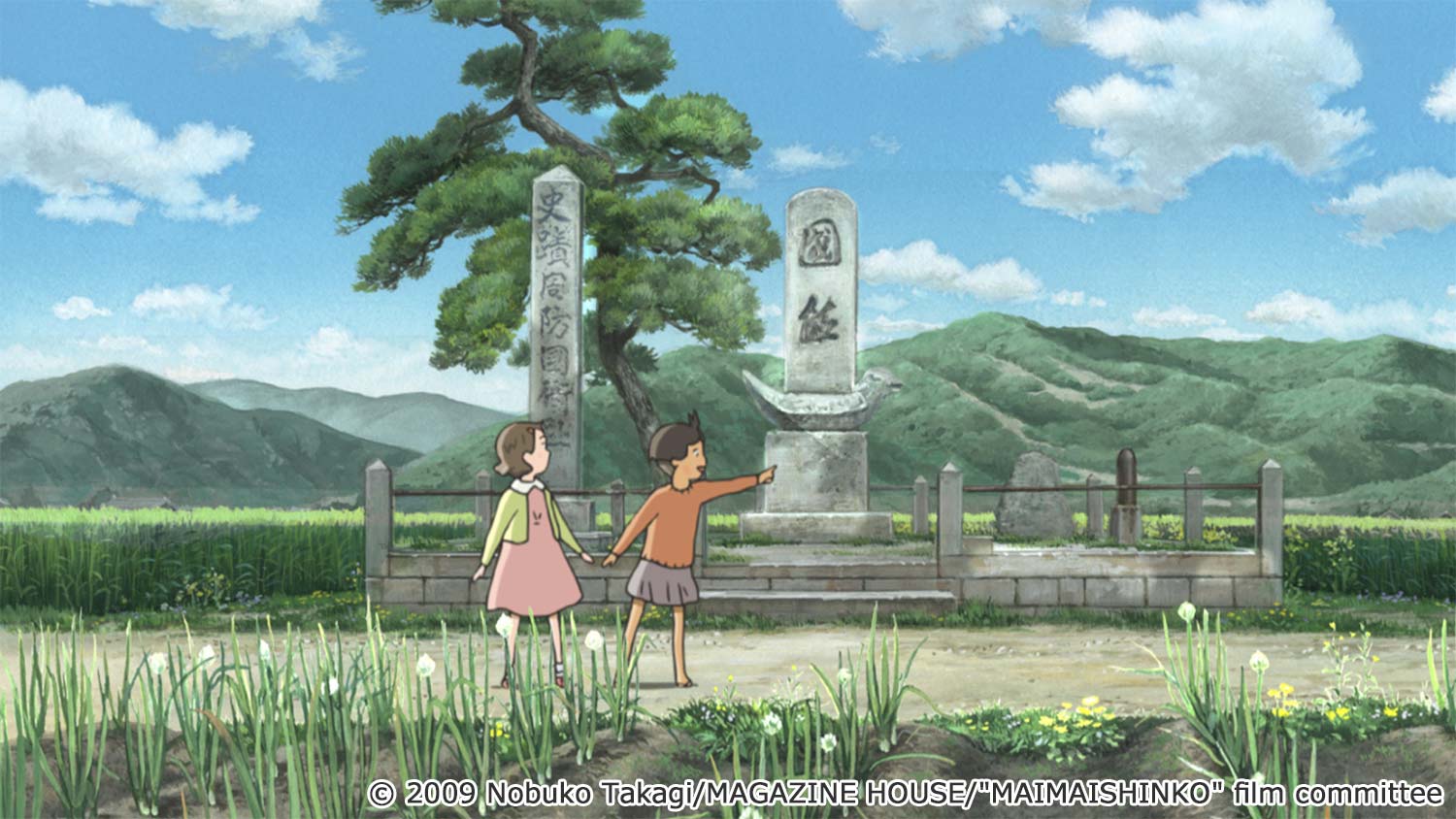
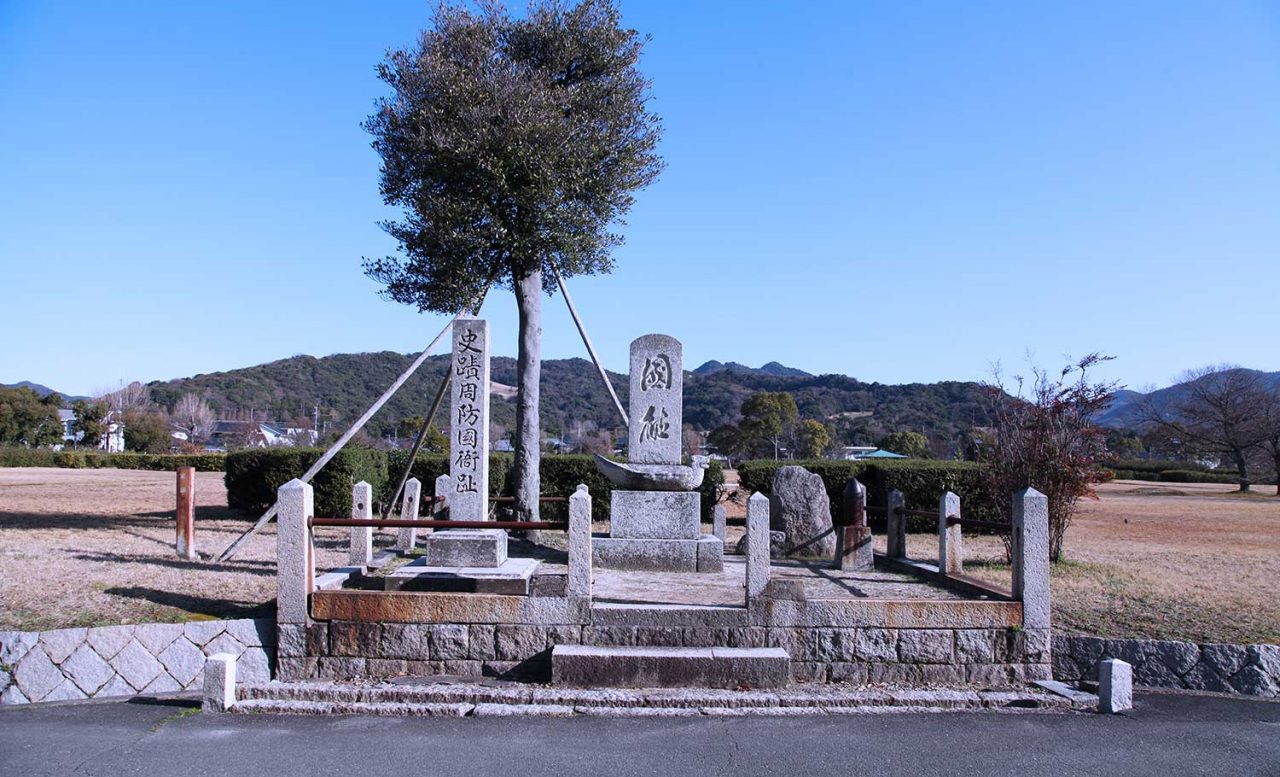 ↑Kokuga remains
↑Kokuga remains
If you are ever asked “Which location should we check out first?”
The answer is definitely right here!
This is where we started, too. Right here at the Kokuga remains.
If nothing else, this is THE spot.
This was shot at 8:30 in the morning.
Locals were out walking their dogs under the clear blue expanse of the morning sky.It was quite tranquil.
It is the perfect spot to start off a tour.
13.Roadside Shrine by West Stone Marker (Pongashi)
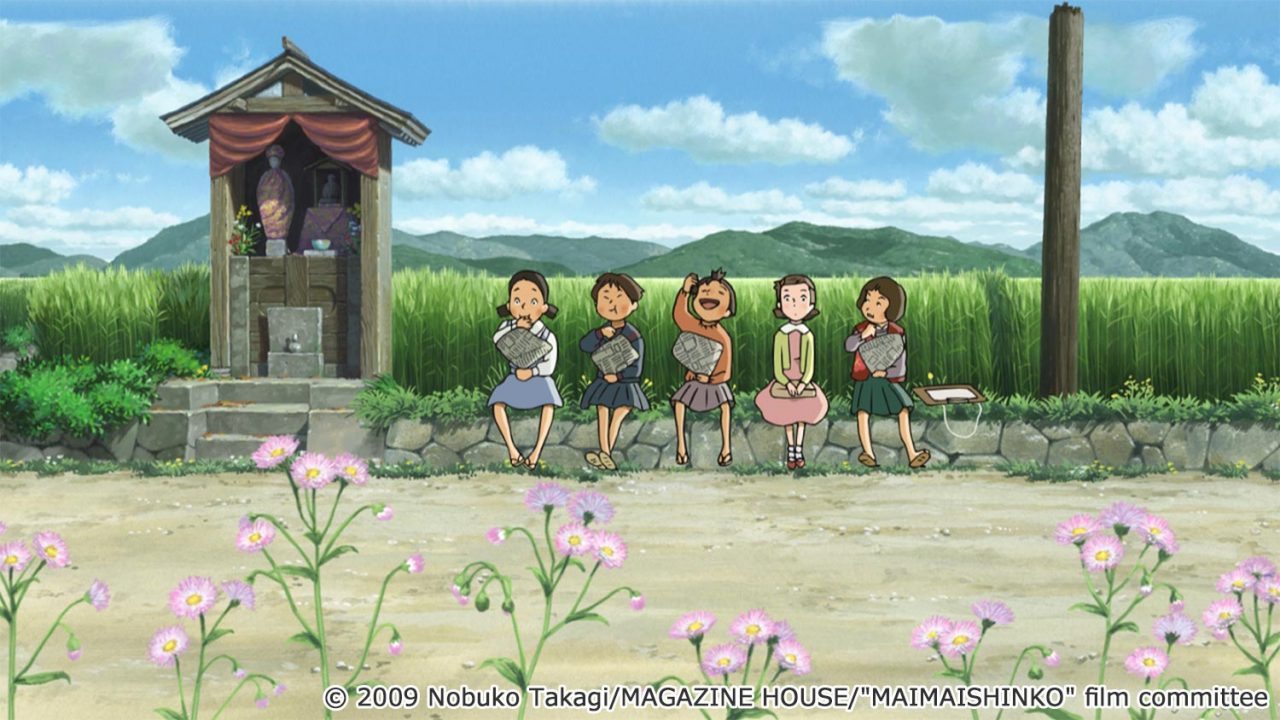
 ↑Roadside shrine by west stone marker
↑Roadside shrine by west stone marker
This is the location you (probably?) know as the place where Shinko and the others lined up eating “Pongashi” puffed cereal.
This is another important location from the film, so you will surely spot it right away!
Or so we thought until we got started…
But then could not find the little shrine anywhere!
“So, it’s west of the Kokuga remains, right? Well which way is west?”
Just as all the directions seemed like they were starting to blur together we found it.
It is just straight down the left until you hit the Kokuga remains.
14.Stone Staircase at Saba Shrine
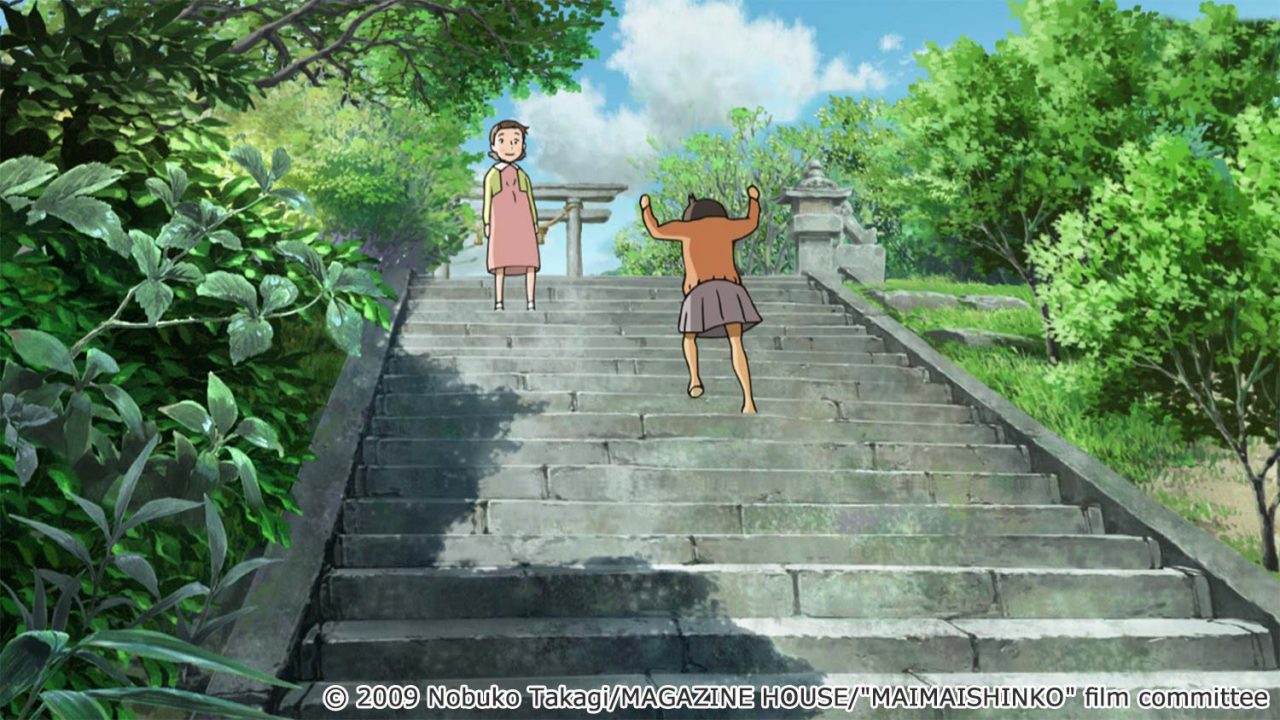
 ↑The stone staircase at Saba Shrine
↑The stone staircase at Saba Shrine
This is the stone staircase where Shinko and Kiiko played rock-paper- scissors and raced up.
These days a railing runs up the middle of the stairs.
We had checked via StreetView before coming, but you cannot tell just how steep and narrow it is until you see it in person!
Elementary school kids sure must have lots of stamina and good balance.
*It can be dangerous, so children and grownups alike should refrain from running on the stairs.
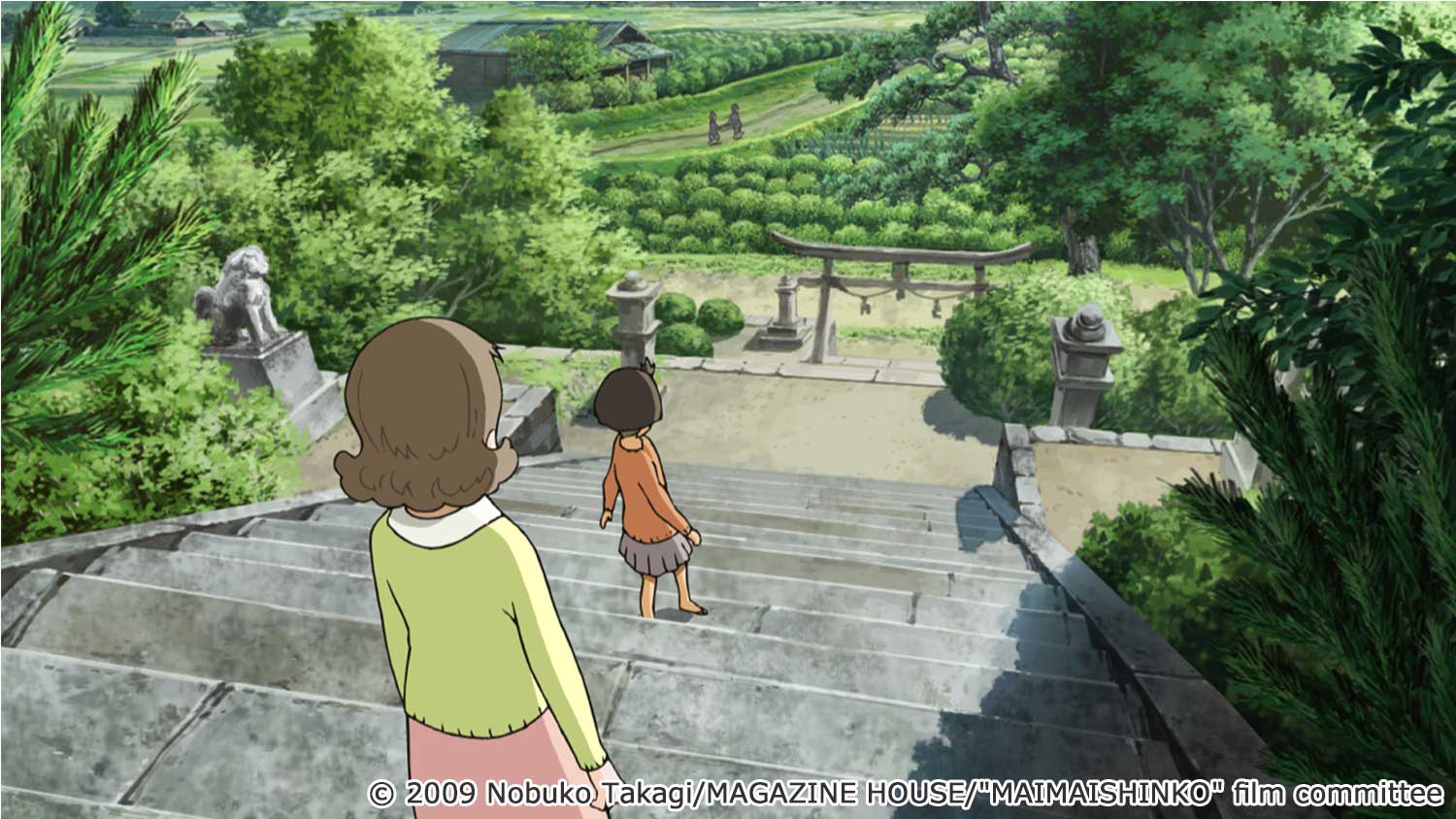
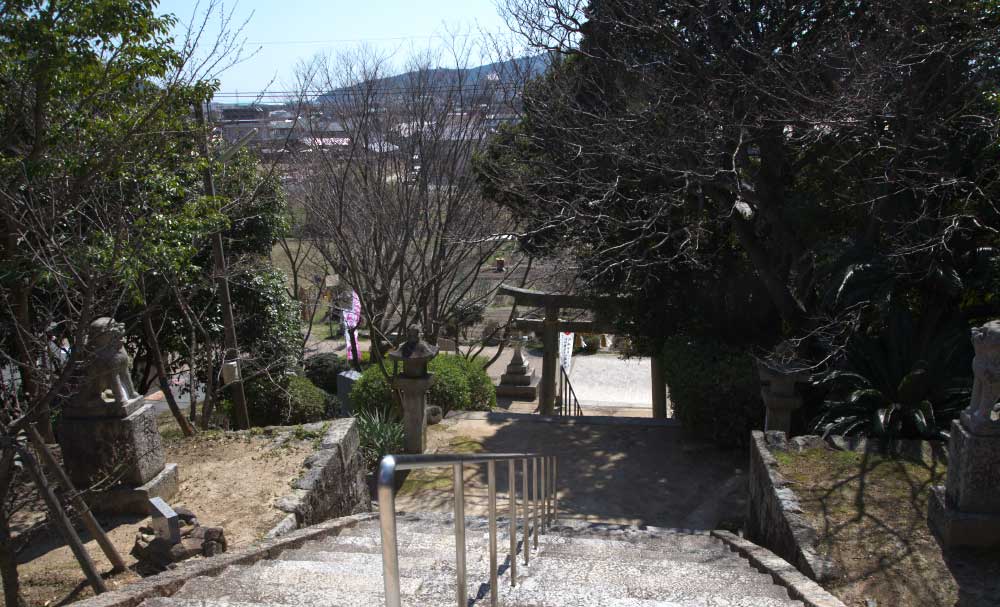 Next is the view from up top.
Next is the view from up top.
The branches from the trees block it from view, but down at the bottom run the fields seen in the movie.
The Komainu lion-dogs still stand guard on either side.
*This is a very steep staircase so be sure not to get too carried away with your camera and wind up hurting yourself!
15.Katsuma Shrine Remains

 Currently known as “Hama no Miya,” this is the site of Katsuma Shrine.
Currently known as “Hama no Miya,” this is the site of Katsuma Shrine.
*There is another location also named Katsuma Shrine, so make sure you visit the right one!
This is the very same location that the two characters sat swaying on in the movie!
Just try and mentally photoshop out the elevated tracks from the background and fill in the rest of the scene.
Imagine real hard and you should be able to see those mountains…right?
*The train line from back then has been moved to the elevated tracks.
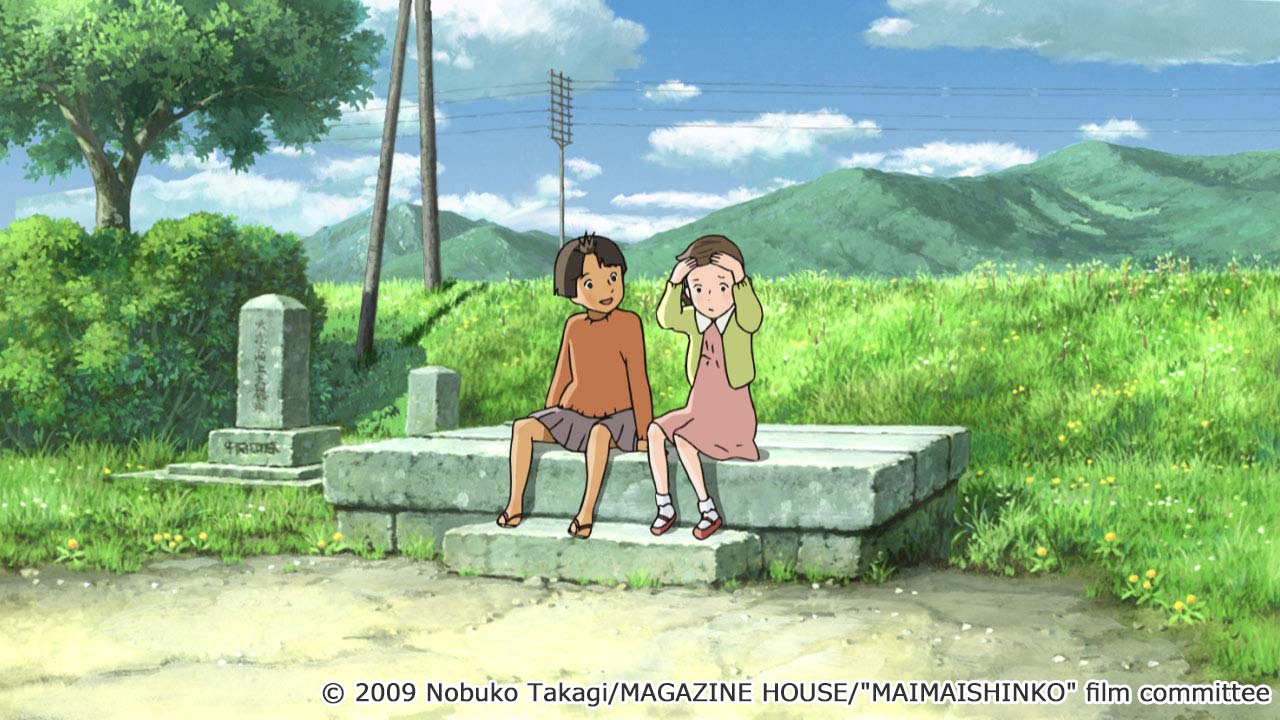
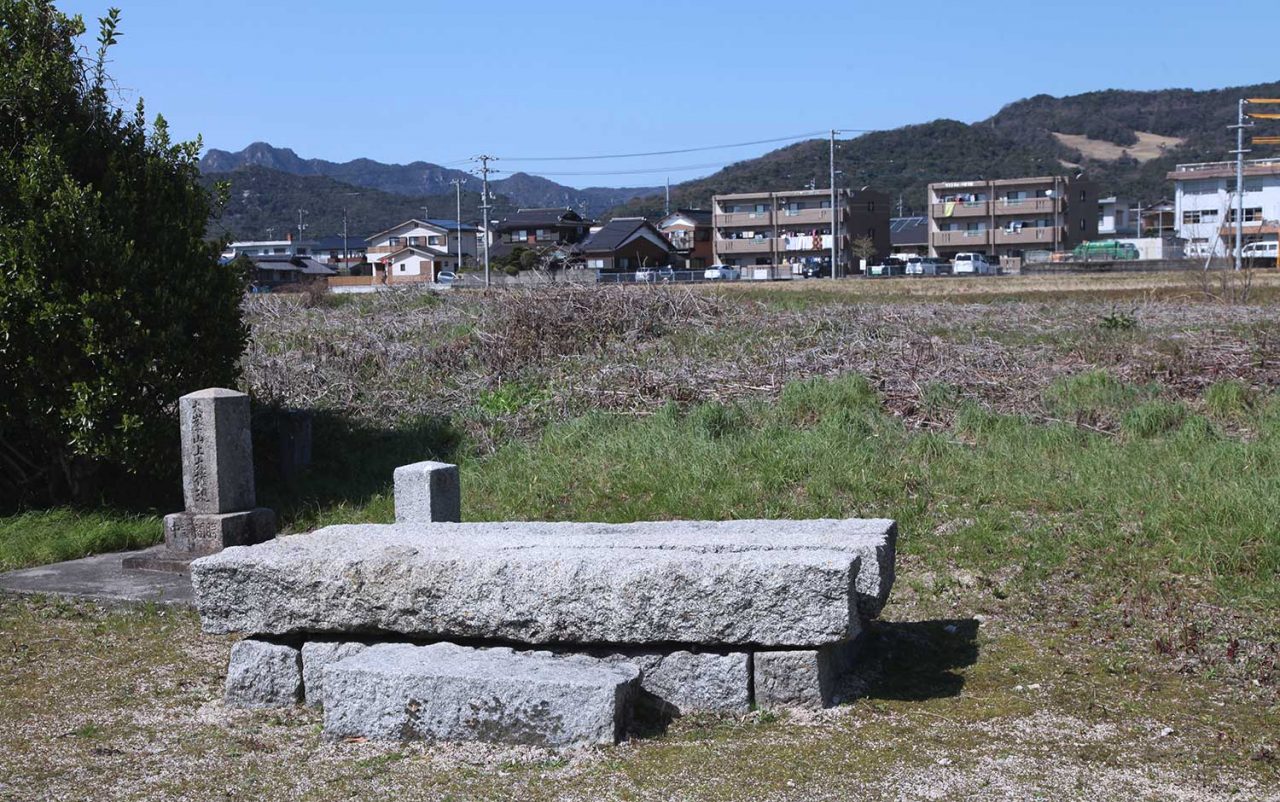 And here is the view from the other side.
And here is the view from the other side.
You can see where the train tracks probably used to run in the top 1/3 of the picture.
The train must have run right behind where Shinko and Kiiko sat. Pretty incredible when you think about it.
These days it is just an unpaved ground littered with sticks.
16.Bar California Alleyway Model
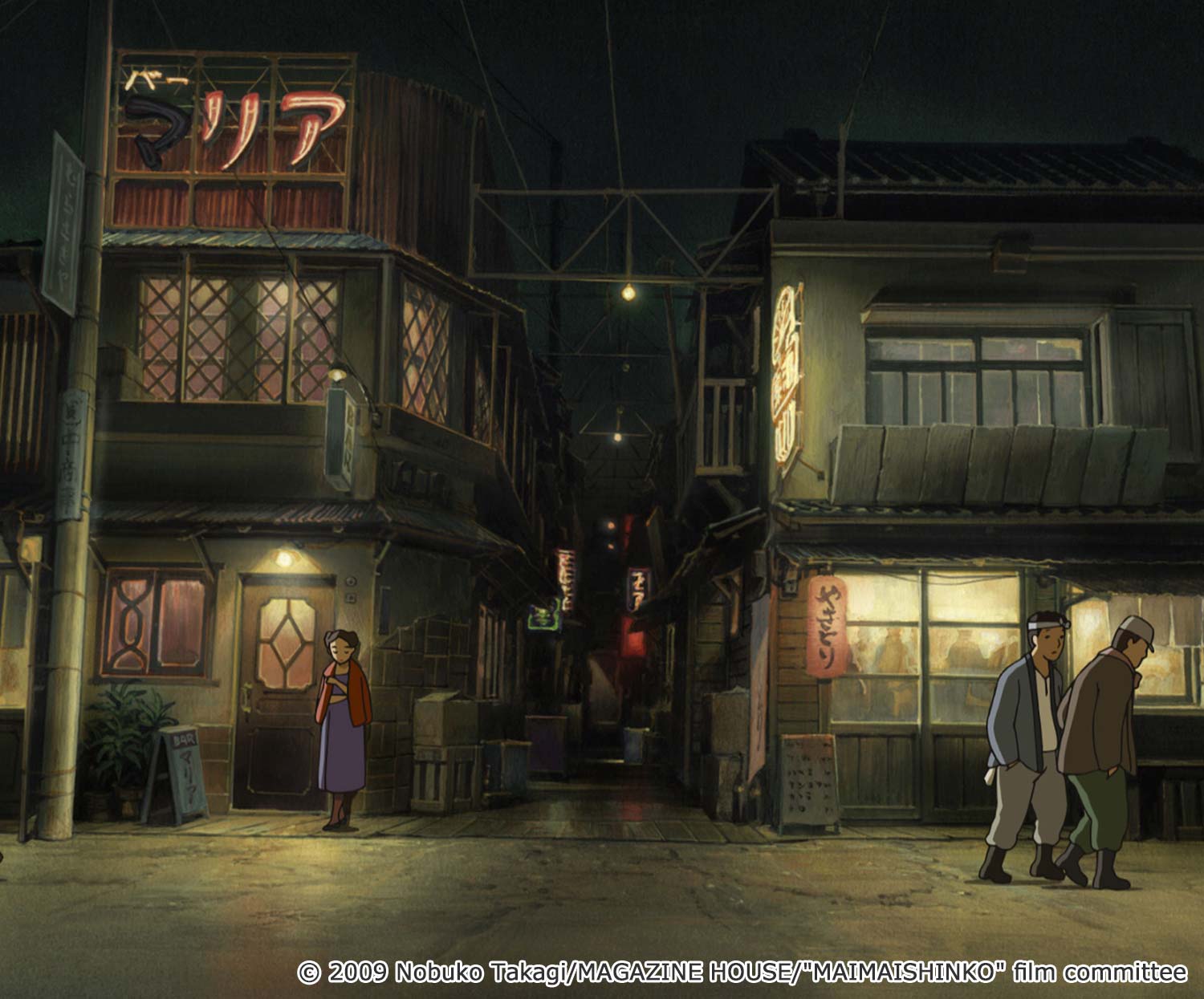
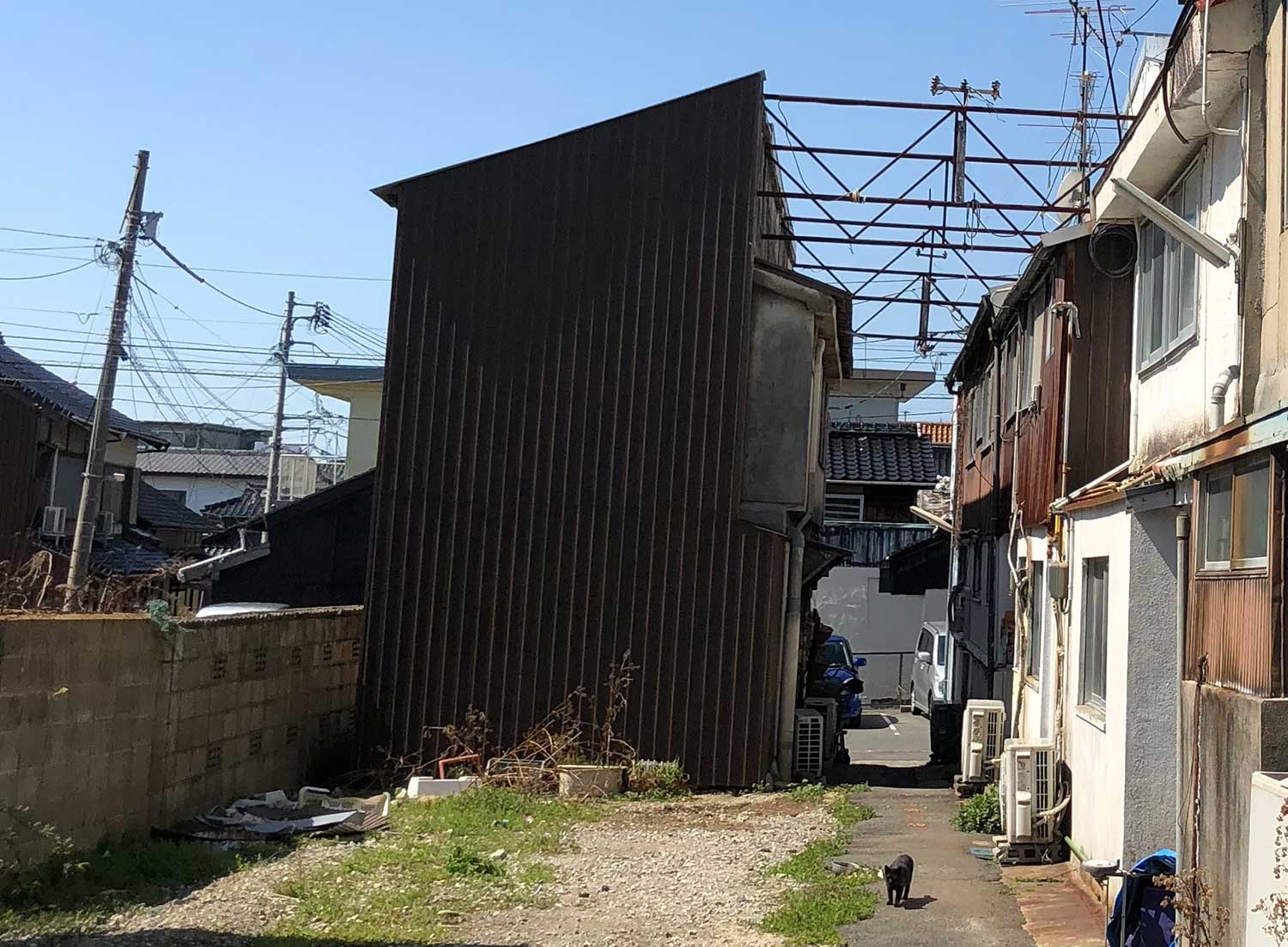 On the way to Hofu Tenman-gu there is a place on the left side that suddenly opens up.
On the way to Hofu Tenman-gu there is a place on the left side that suddenly opens up.
This is the spot that was the model for the alleyway by Bar California.
These days the left side has been torn down and is now just a place where neighborhood cats gather around.
17.Saba River Bank
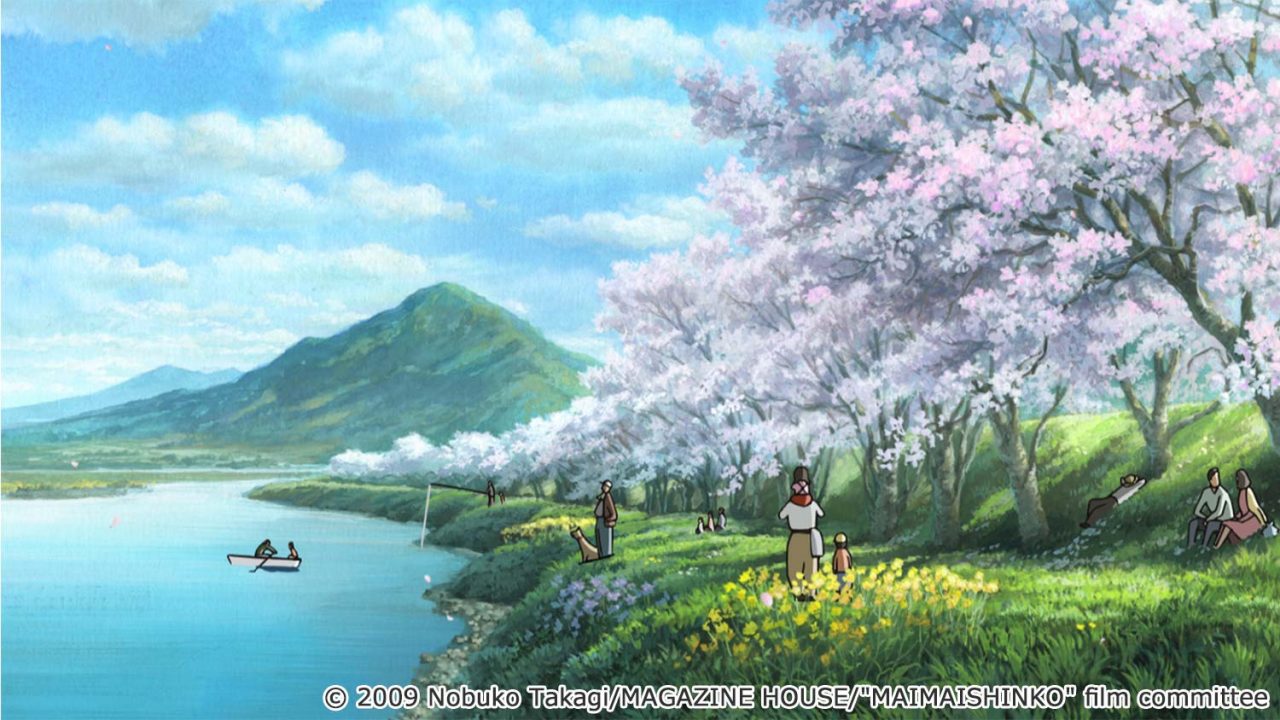
 Those with cars or bicycles should definitely check this spot out!
Those with cars or bicycles should definitely check this spot out!
The cherry blossoms along the bank have since been removed.
But a few years ago, mini cherry blossoms were planted along the top of the stairs.
The water is clear enough that you can see right to the river bottom.
In the end
How was the “Mai Mai Miracle” location site guidebook?
We hope it will come in handy when you visit for yourself.
When we went exploring Hofu with our cameras and reference material in hand we were surprised at how lively the local kids and parents with their babies were in greeting us.
Kids saying hello to strangers they have never met.
That’s something you would rarely ever see in big cities, but something that has just been that way ever since the good old days here.
Thank you for reading this Location Guide.
Thanks to special cooperation by Director Sunao Katabuchi
“Mai Mai Miracle” (2009)
Directed by Sunao Katabuchi, director of the 2016 movie “In This Corner of the World”
An elaborately crafted and heavily researched work set in Yamaguchi Prefecture’s Hofu City in the 1950s, that deftly captures scenery that all can find nostalgic and the sort of bittersweet memories that never fade, bringing it to life through animation.
This film premiered in the Shinjuku Piccadilly Theater on November 11th, 2009 and was shown in theaters across Japan. After its release, word spread about the film’s popularity, and it was shown at the Laputa Asagaya Theater for an extended run that went on for an unusually long 50 days (approx. 7 weeks), with the theater owner commenting on how it was the only film in memory that could pack a theater during late night showings for so long. Its success was also picked up online, with petitions taking off for extended showings, and efforts by local residents throughout Japan working to strike deals with local theaters to show the film for the communities, and successfully doing so in Tokyo, Saitama, Shizuoka, Niigata, and Hokkaido. The fans worked to promote this “Mai Mai passion,” with fan-run websites, the distribution of self-made posters, and fan forums, and the film went on to earn awards at overseas film festivals. Even to this day, 10 years after its release, there are still ongoing showings of the film being held.
And it goes without saying that the success of the film “In This Corner of the World” was helped in part by this passion for Mai Mai.
-Ottawa International Animation Festival – Prize Winning in Feature Film Competition (2009)
-29th Brussels Animation Film Festival – Anima 2010 BETV/Audience Awards for Feature Film Competition (2010)
-the 20th Cine Junior International Film Festival – the Audience Award
-Annecy International Animated Film Festival and Market-run officially
“Mai Mai Miracle” Official Website
http://www.mai-mai.jp/
© 2009 Nobuko Takagi/MAGAZINE HOUSE/”MAIMAISHINKO” film committee
